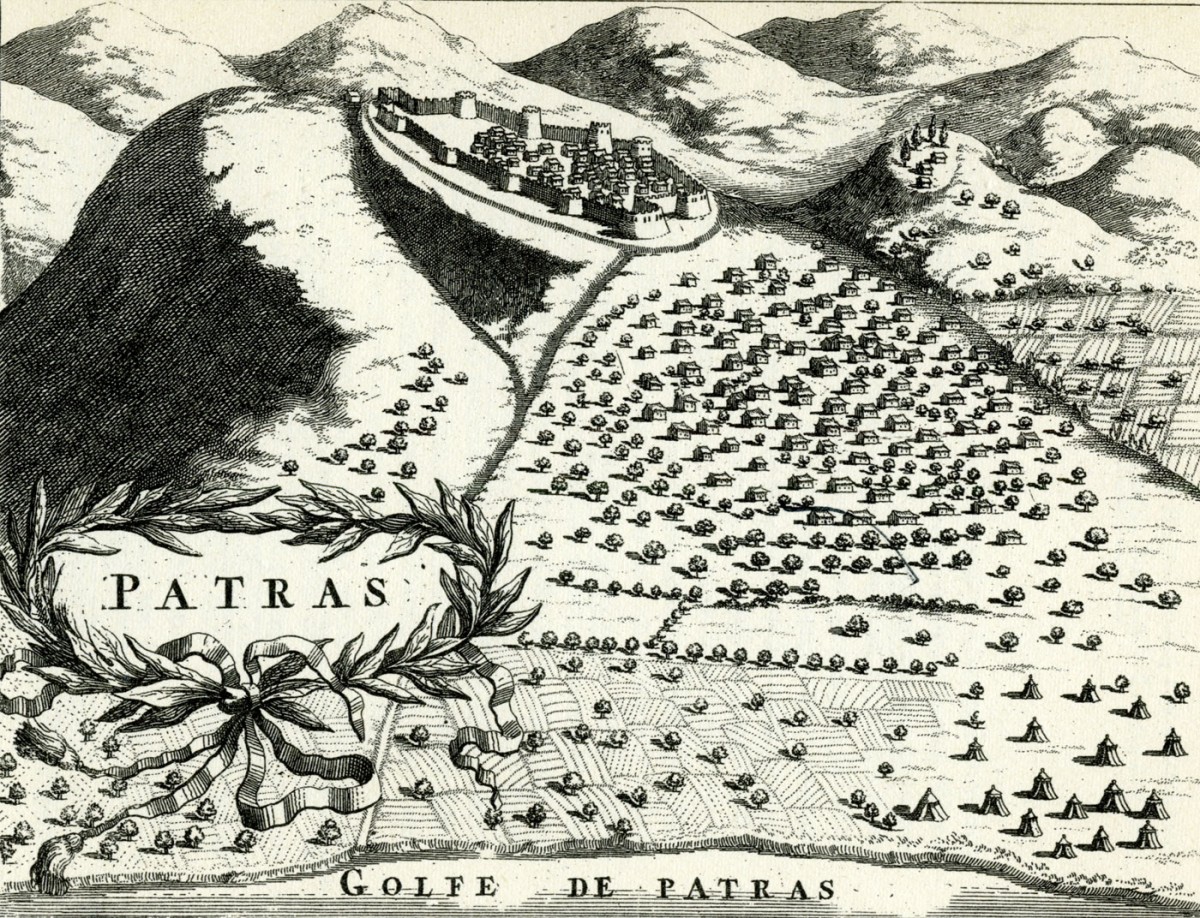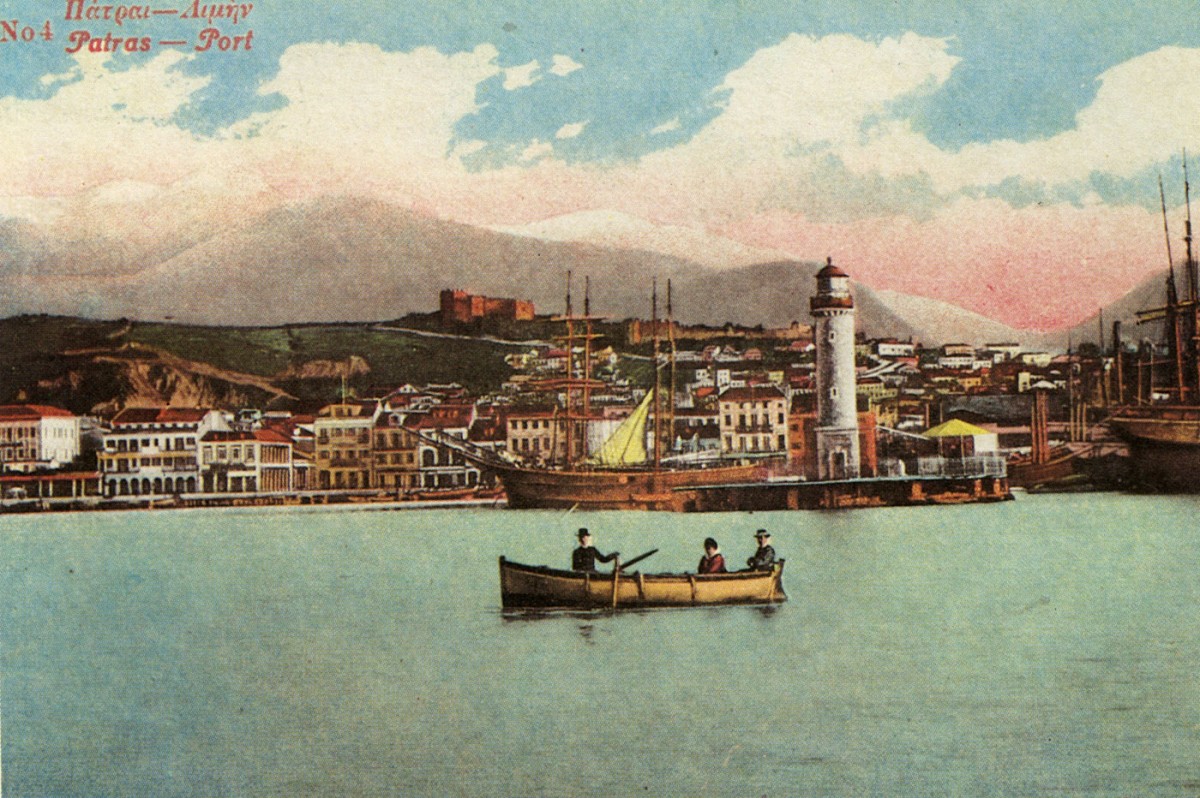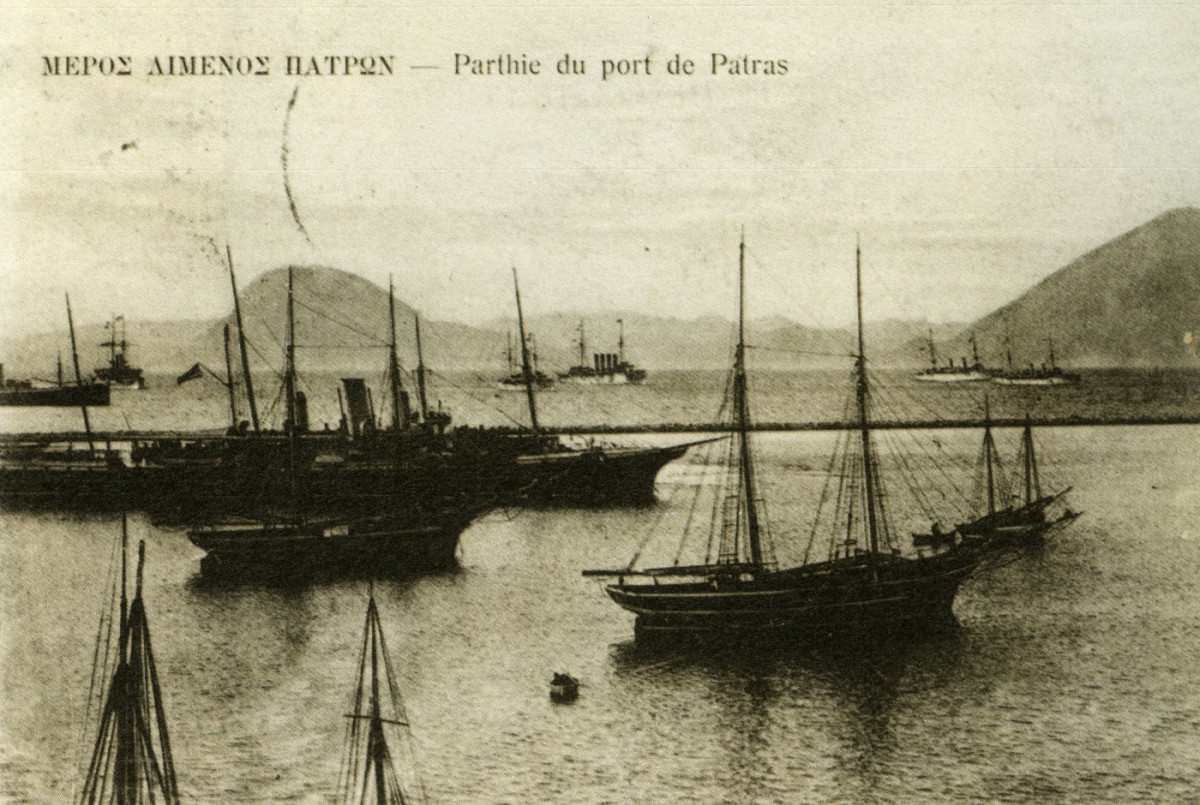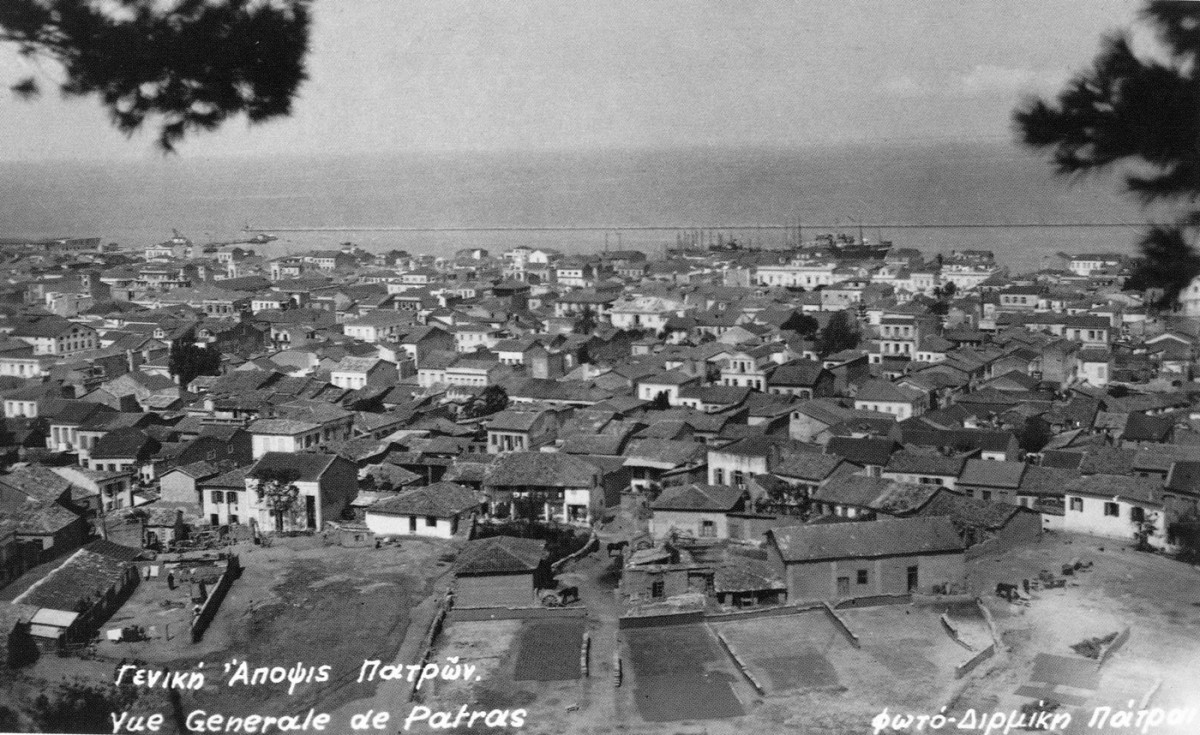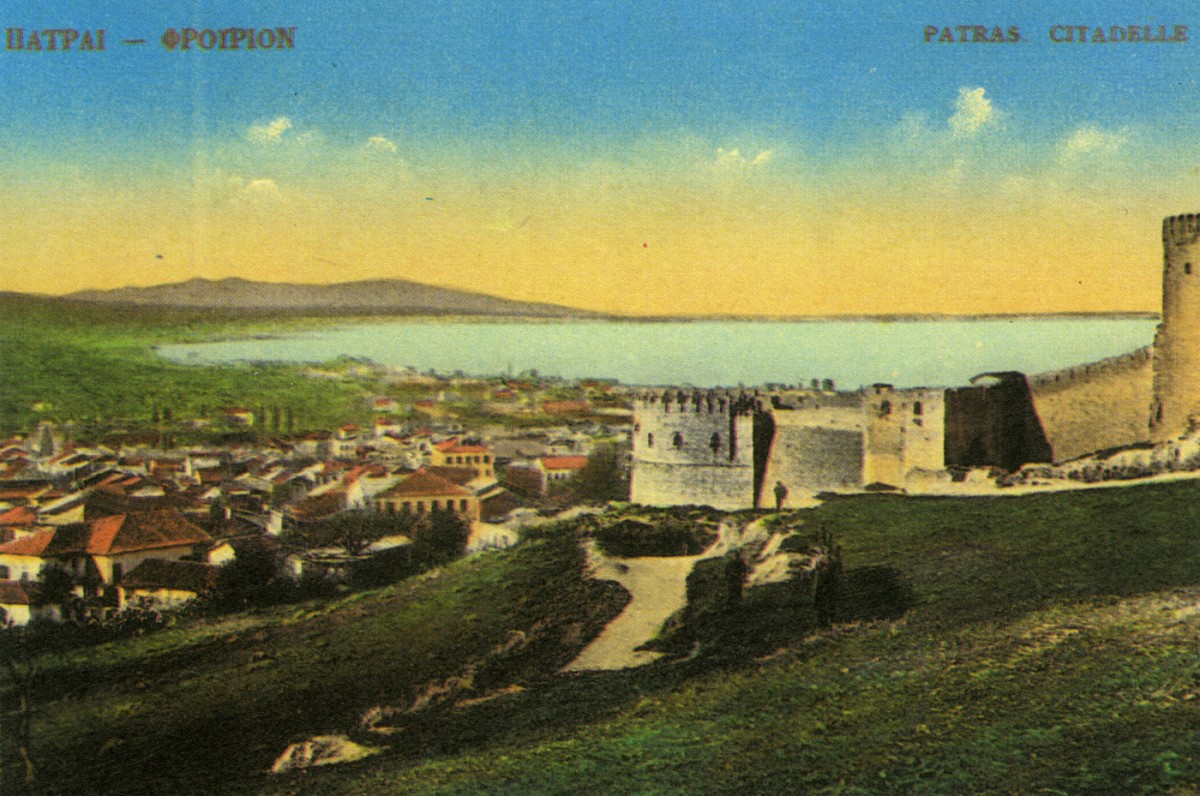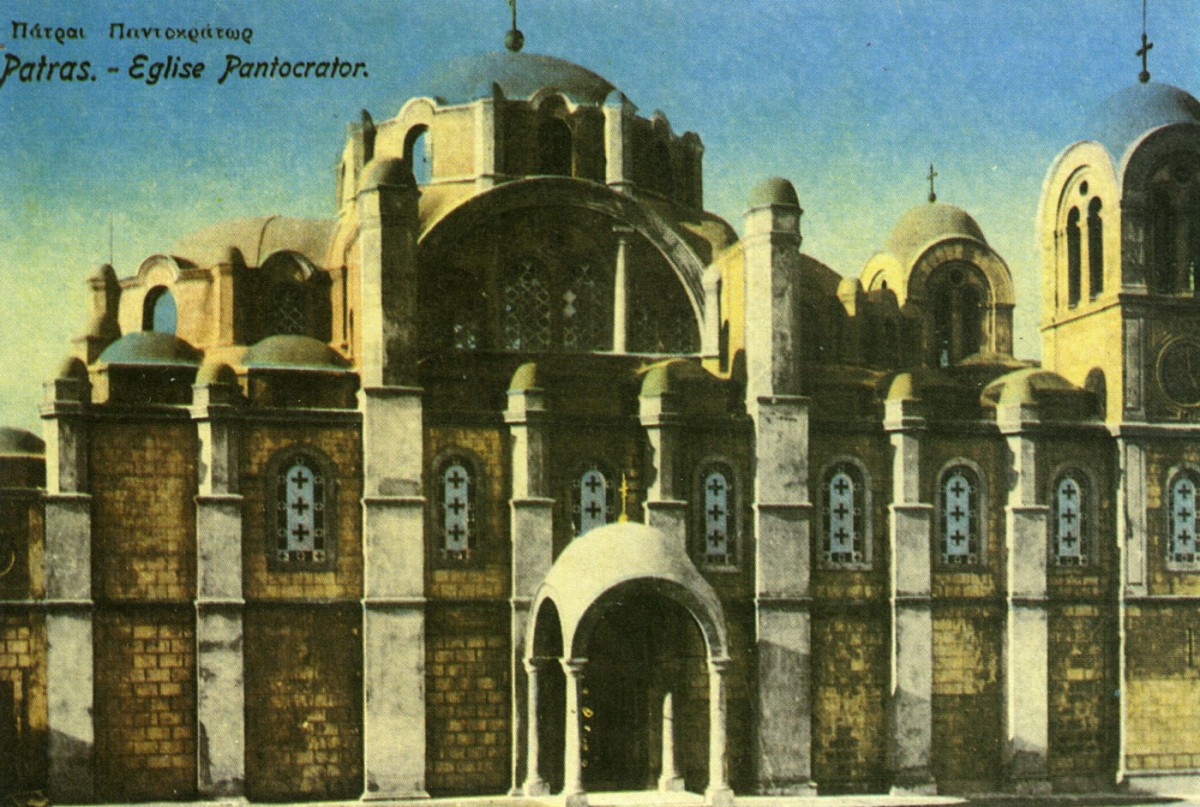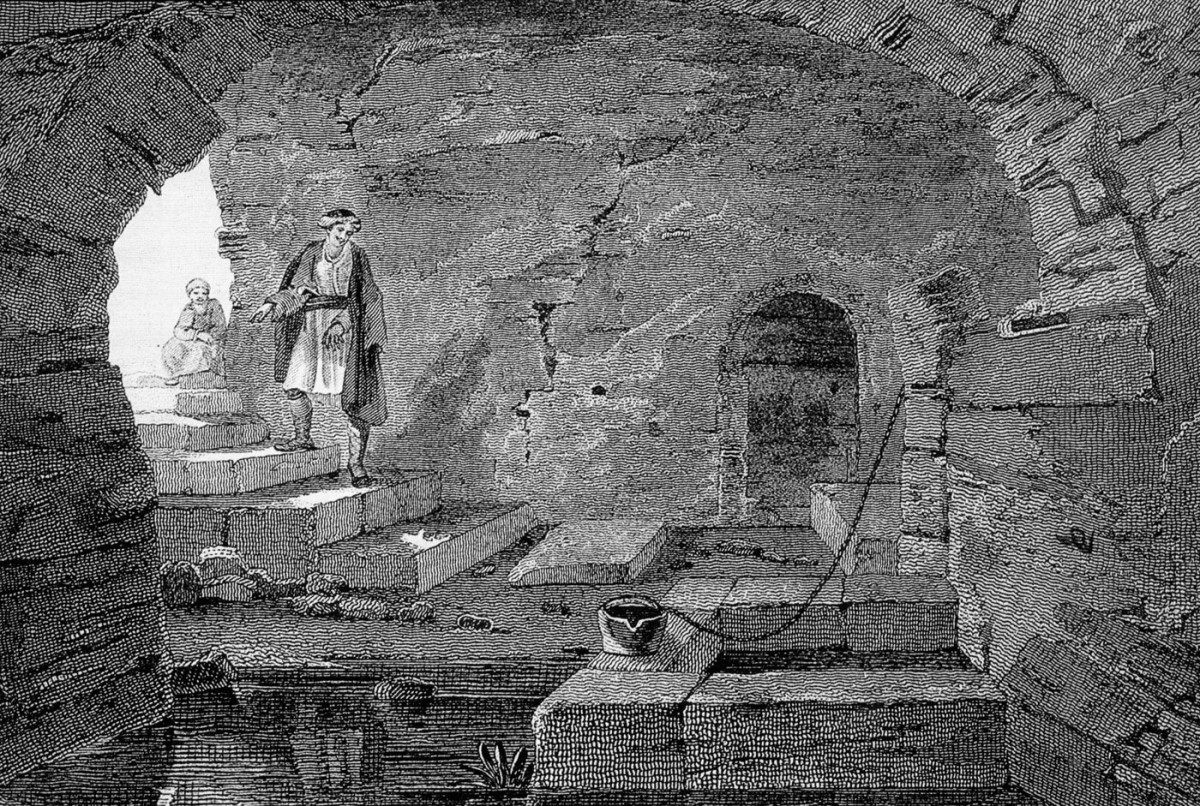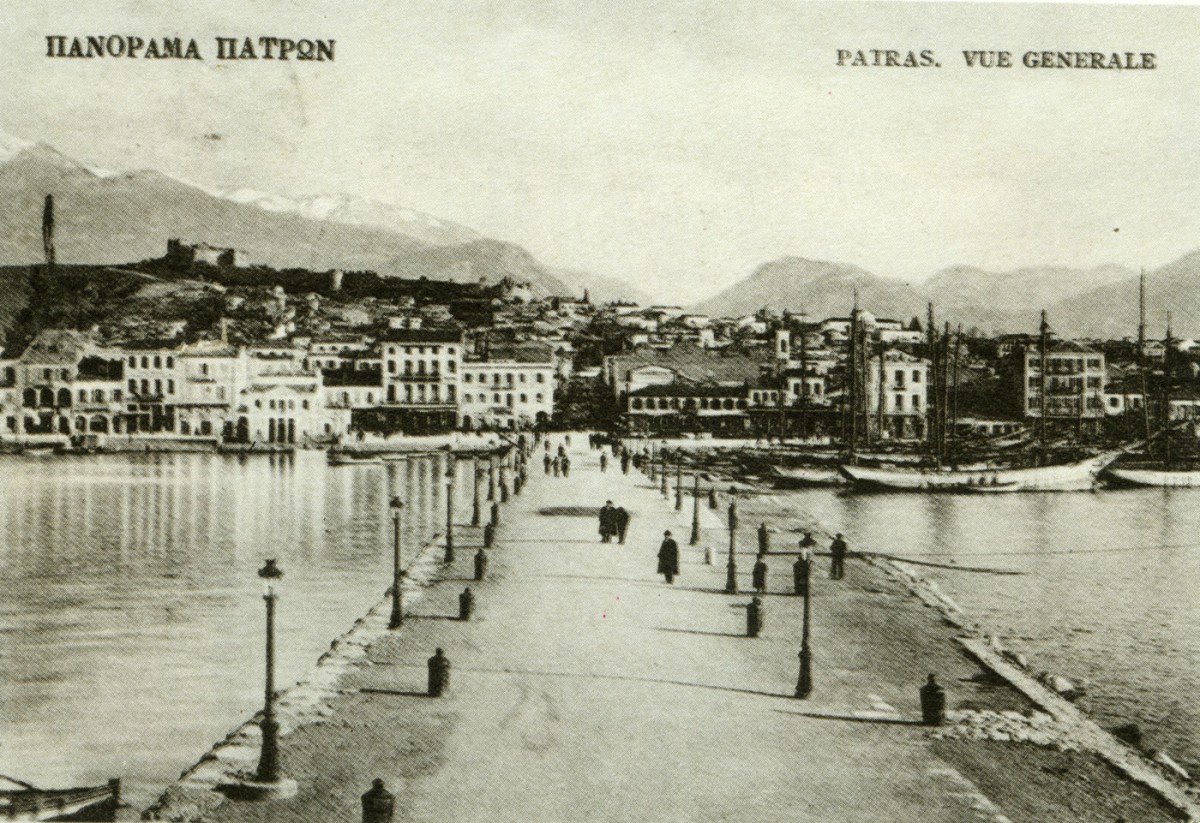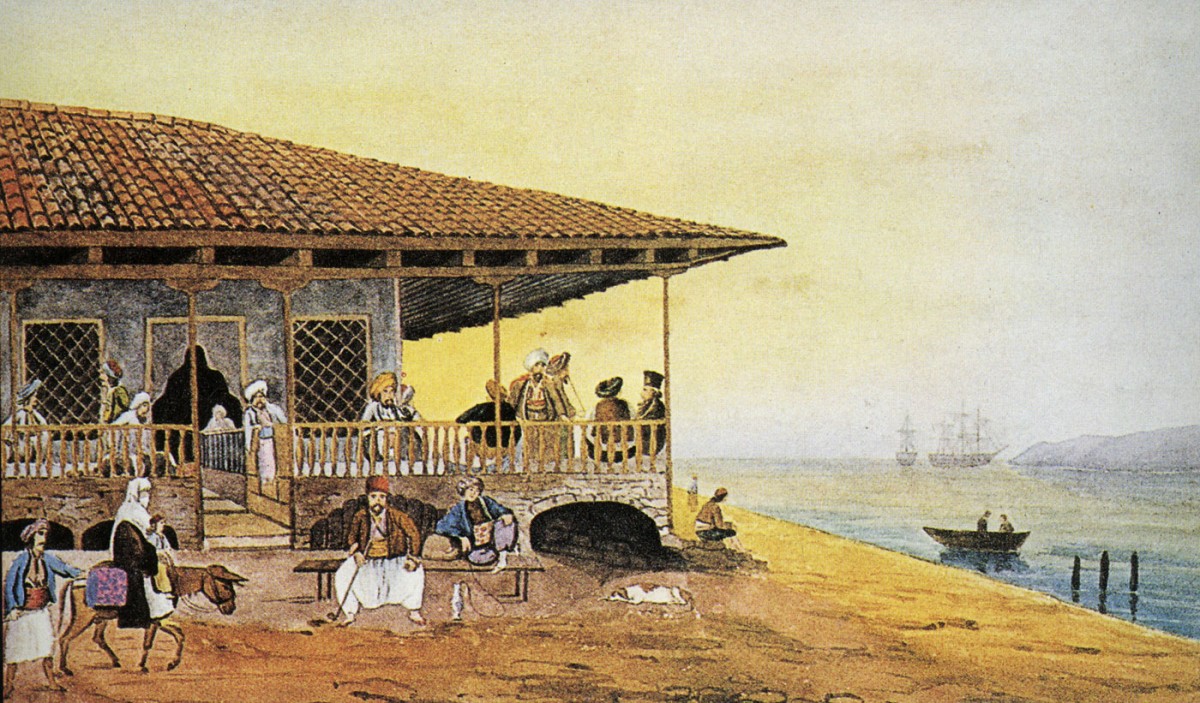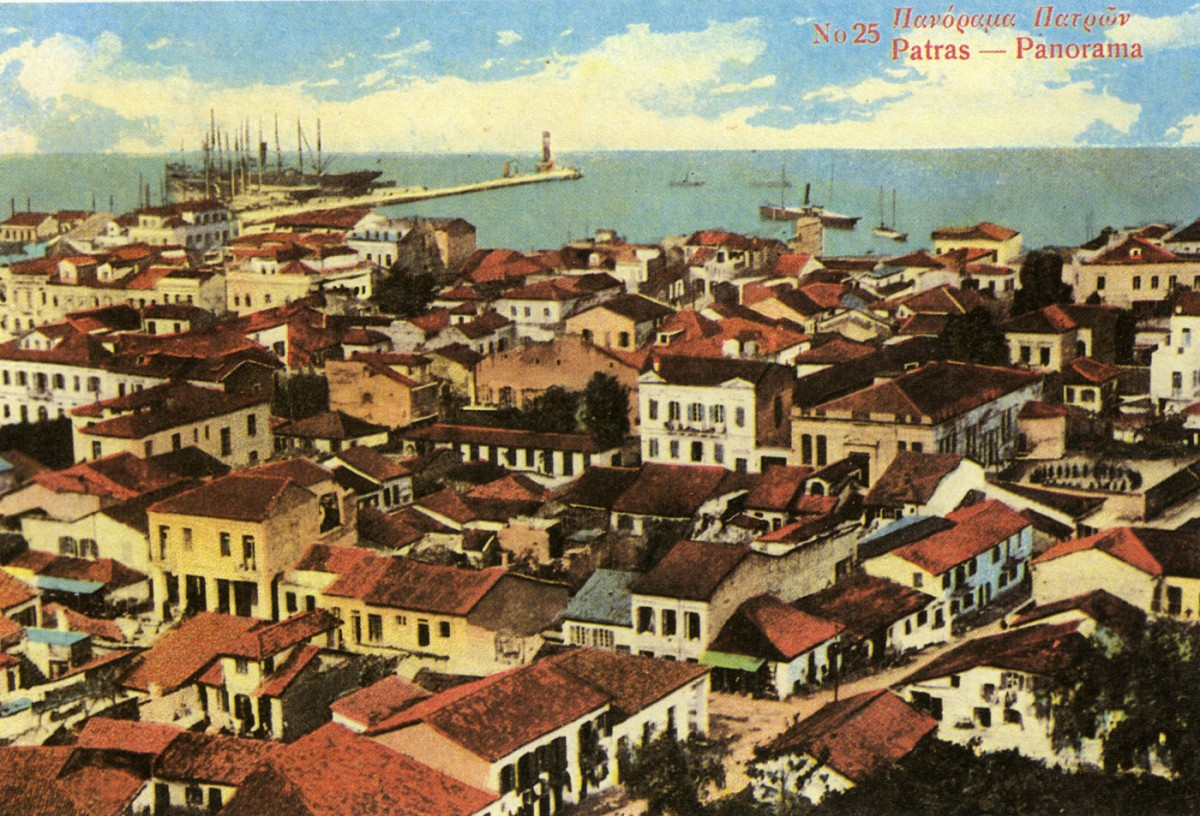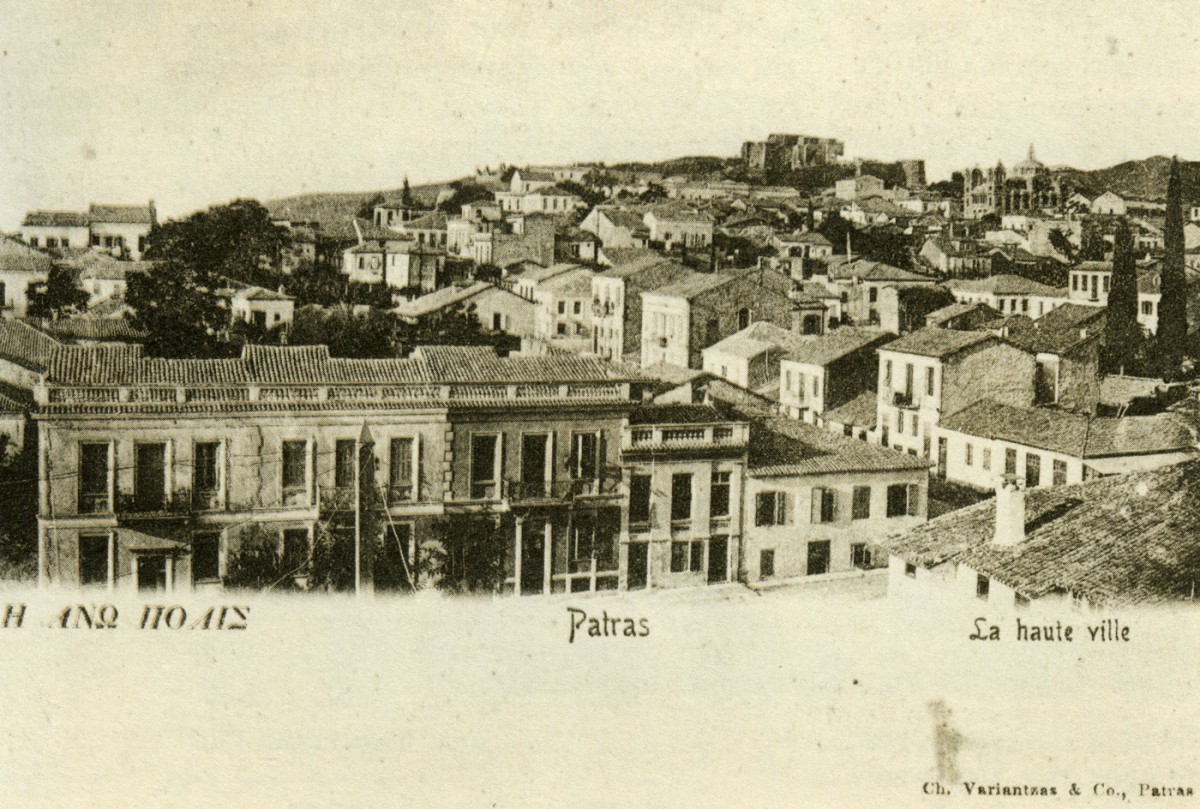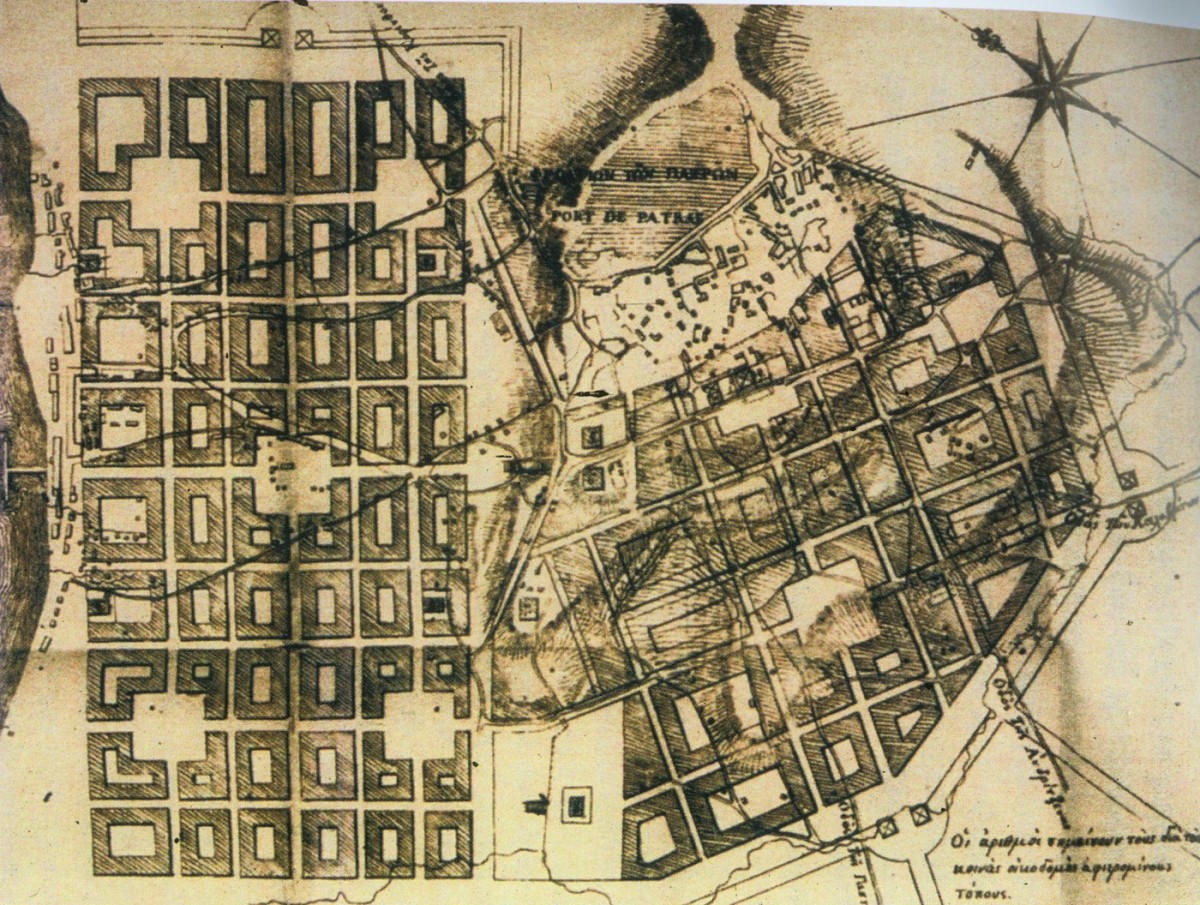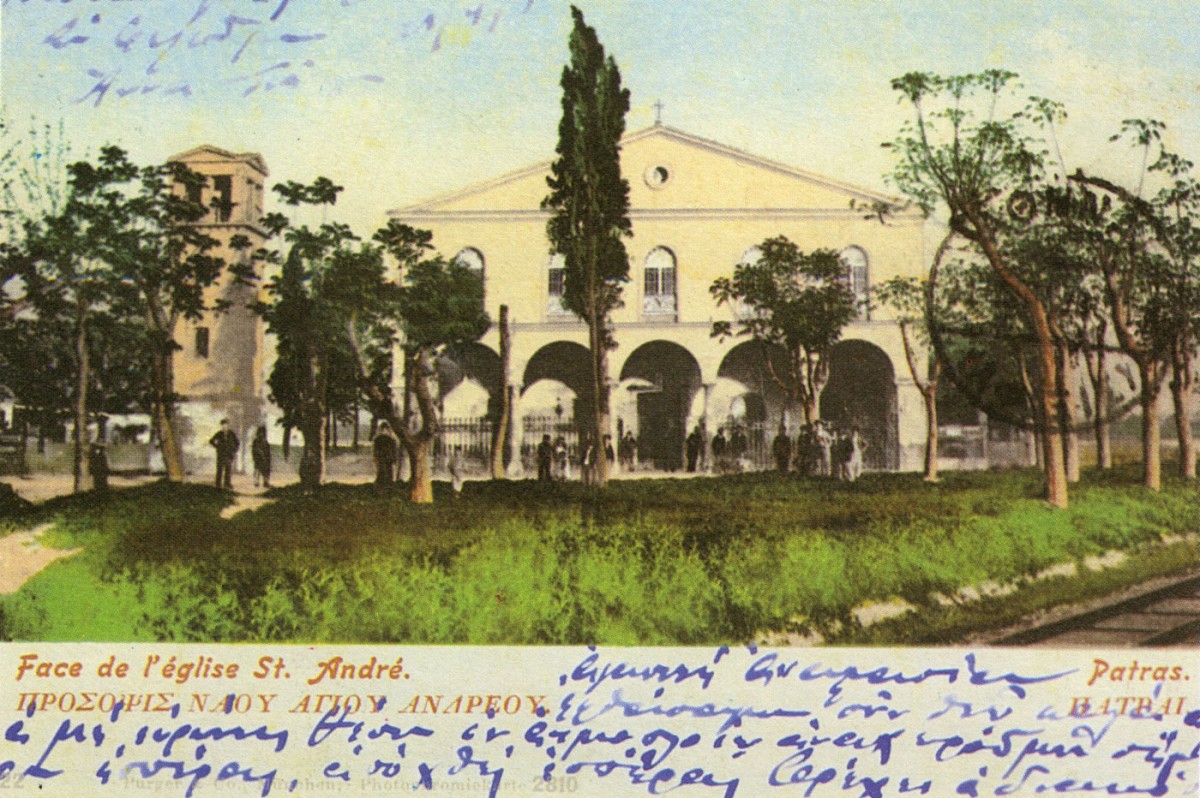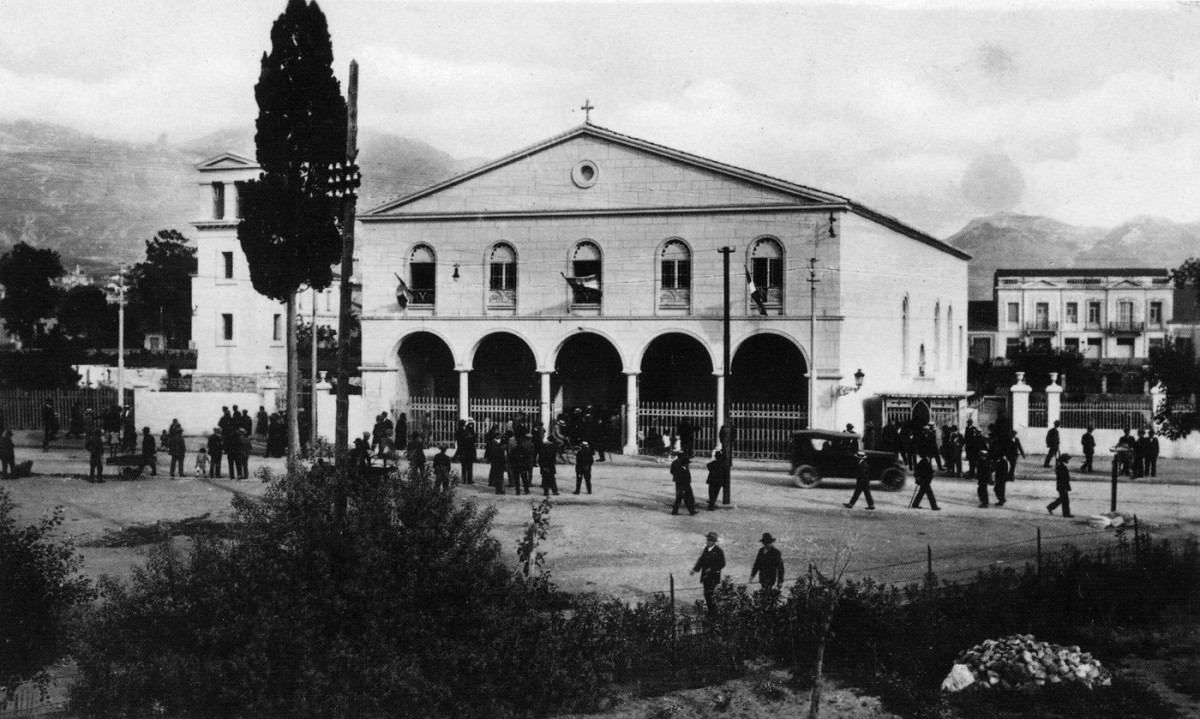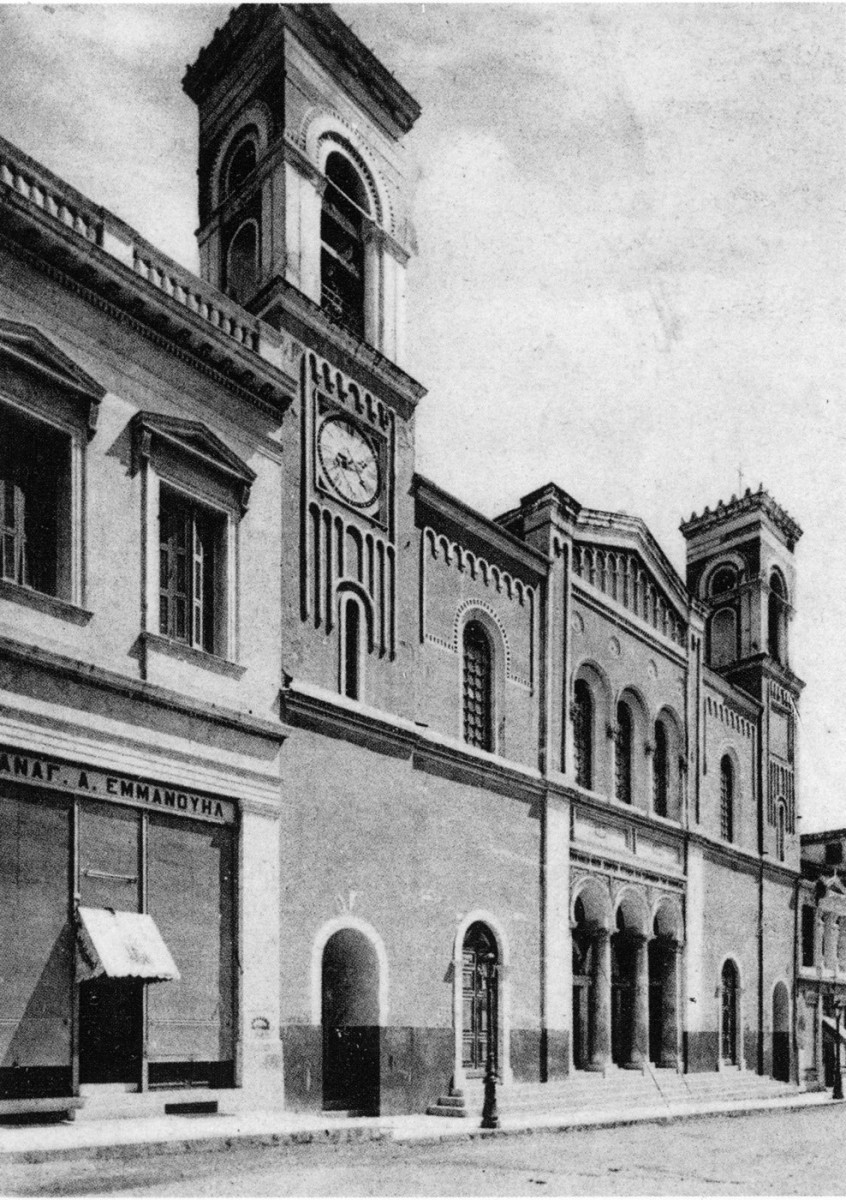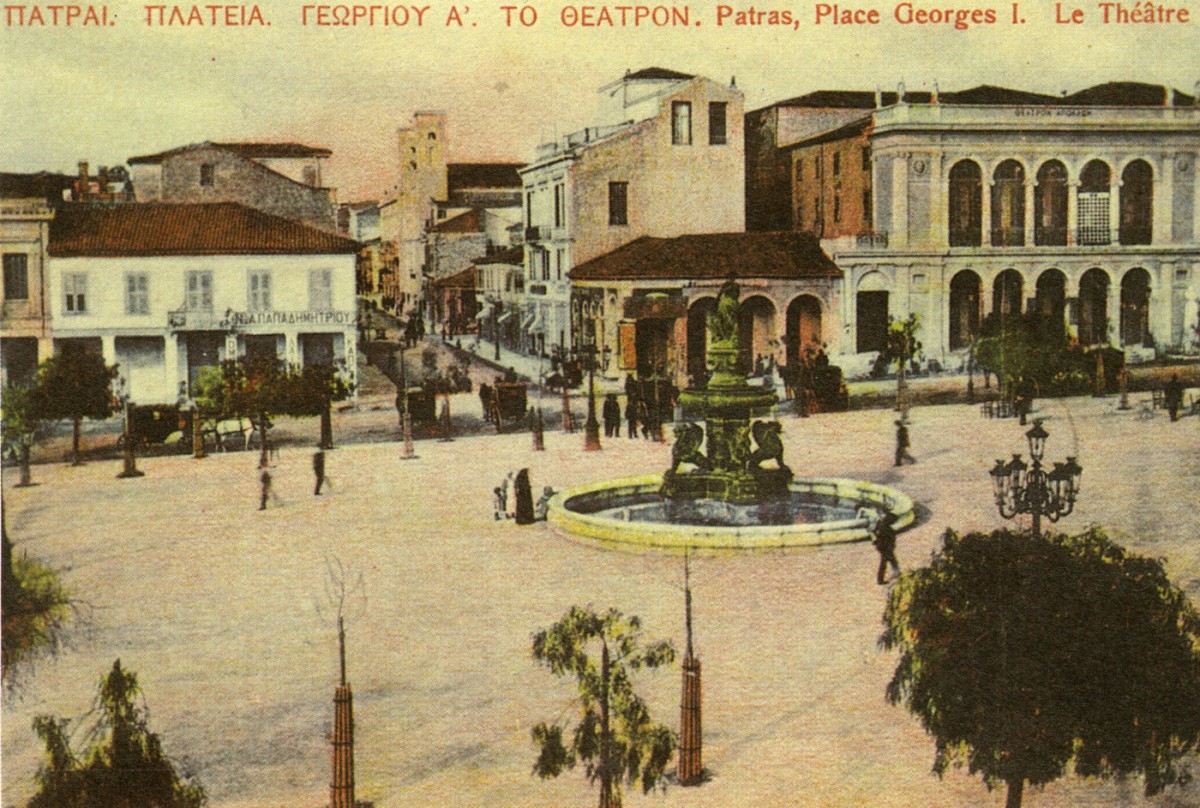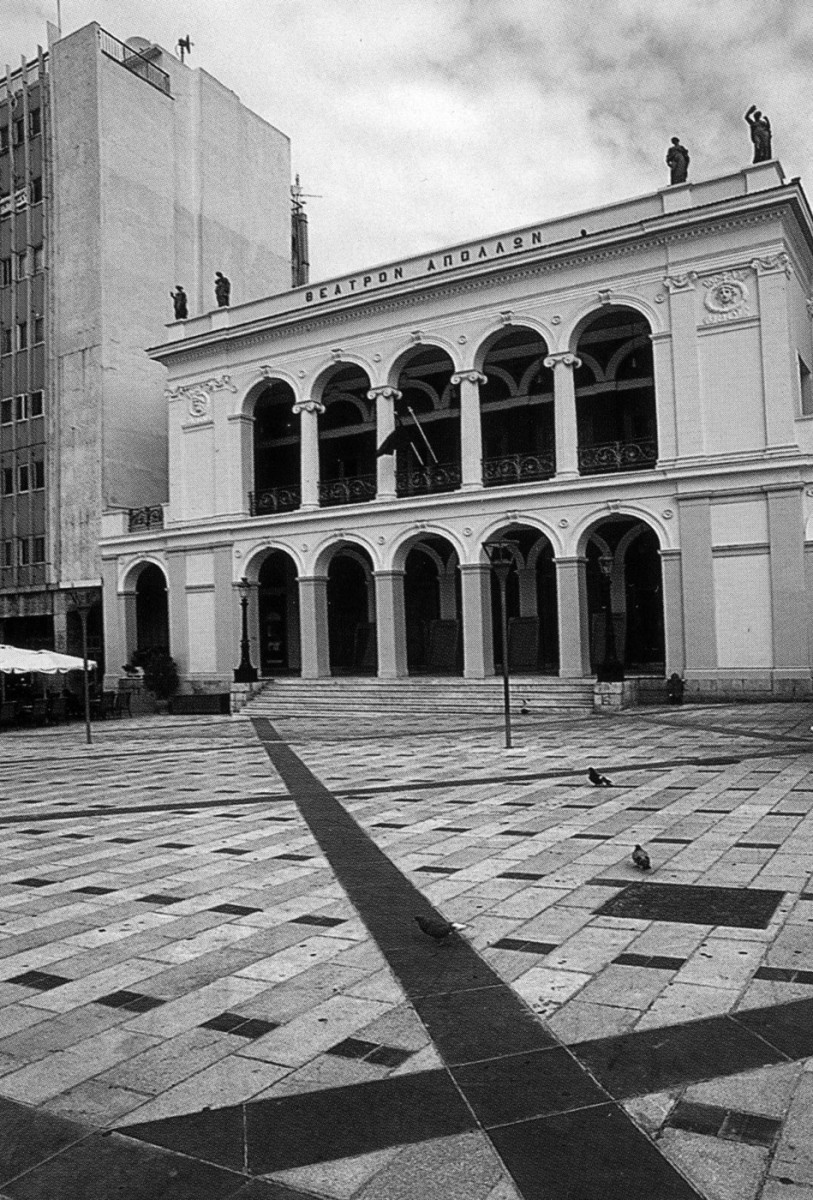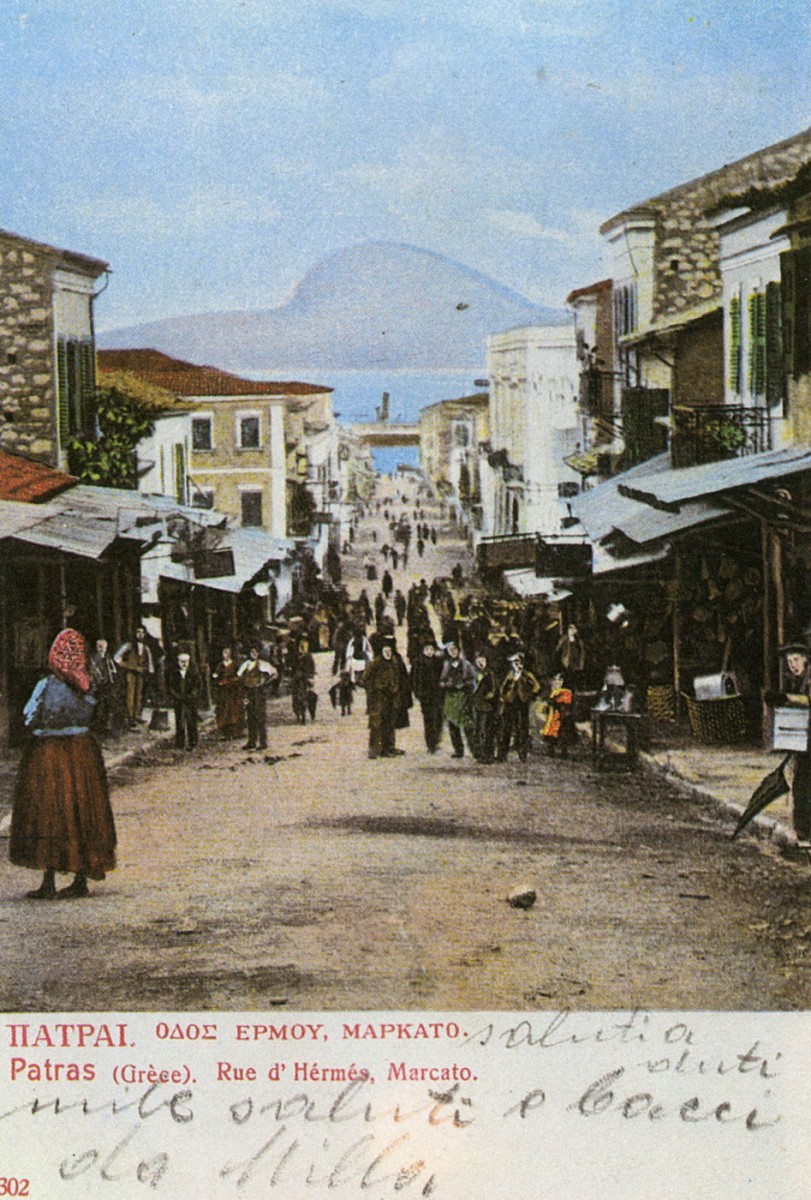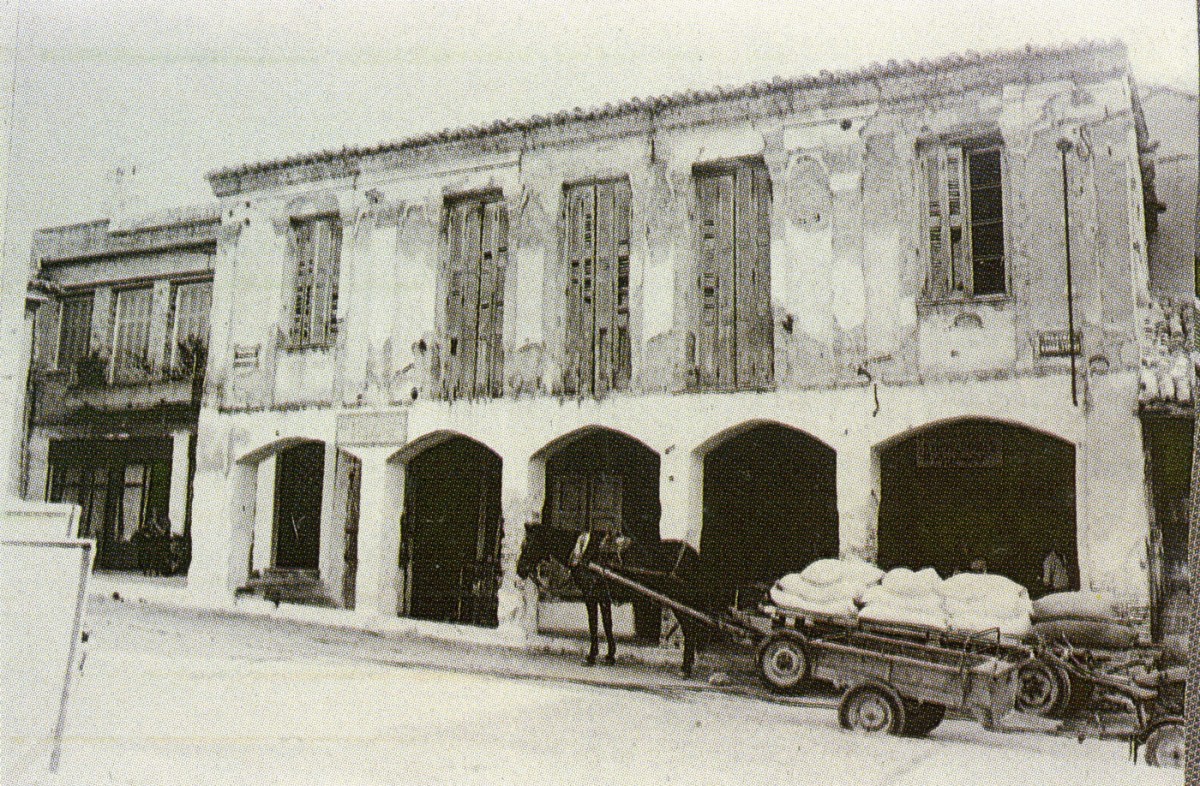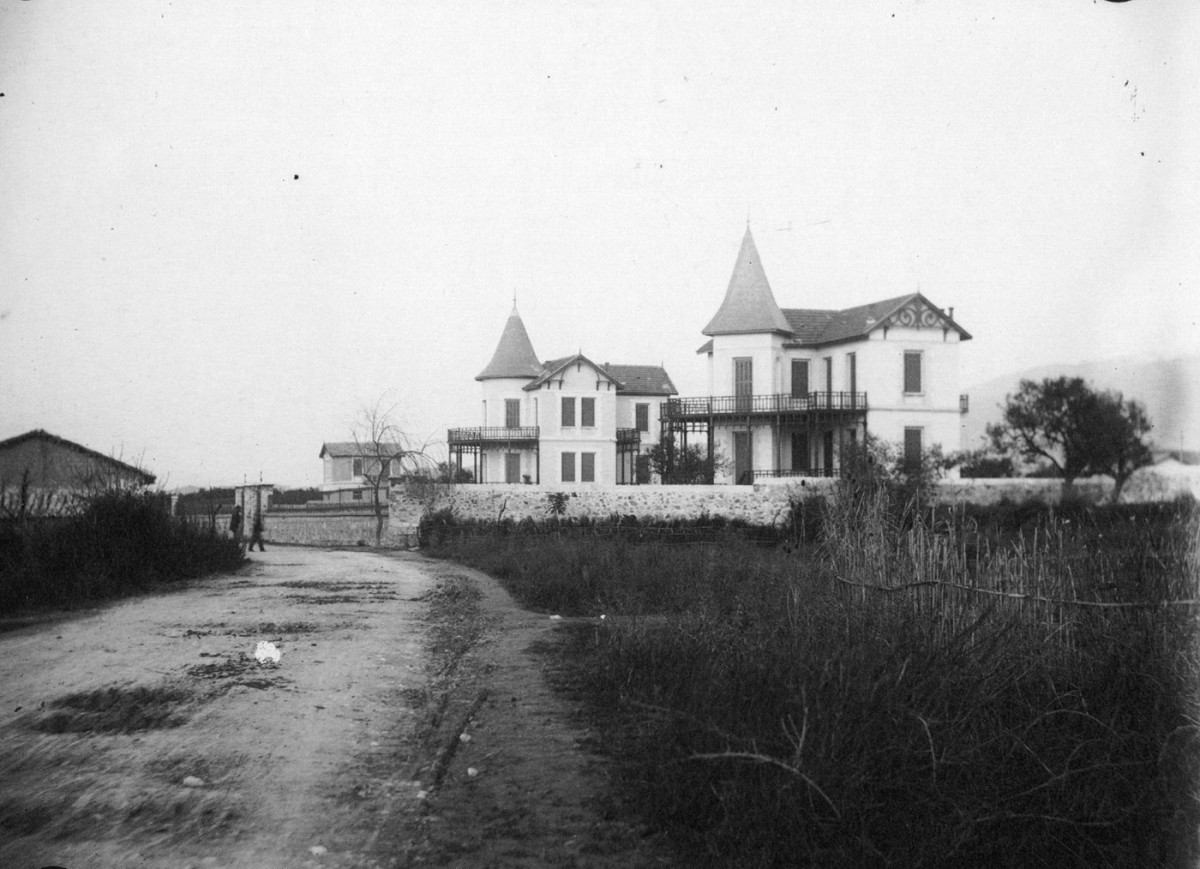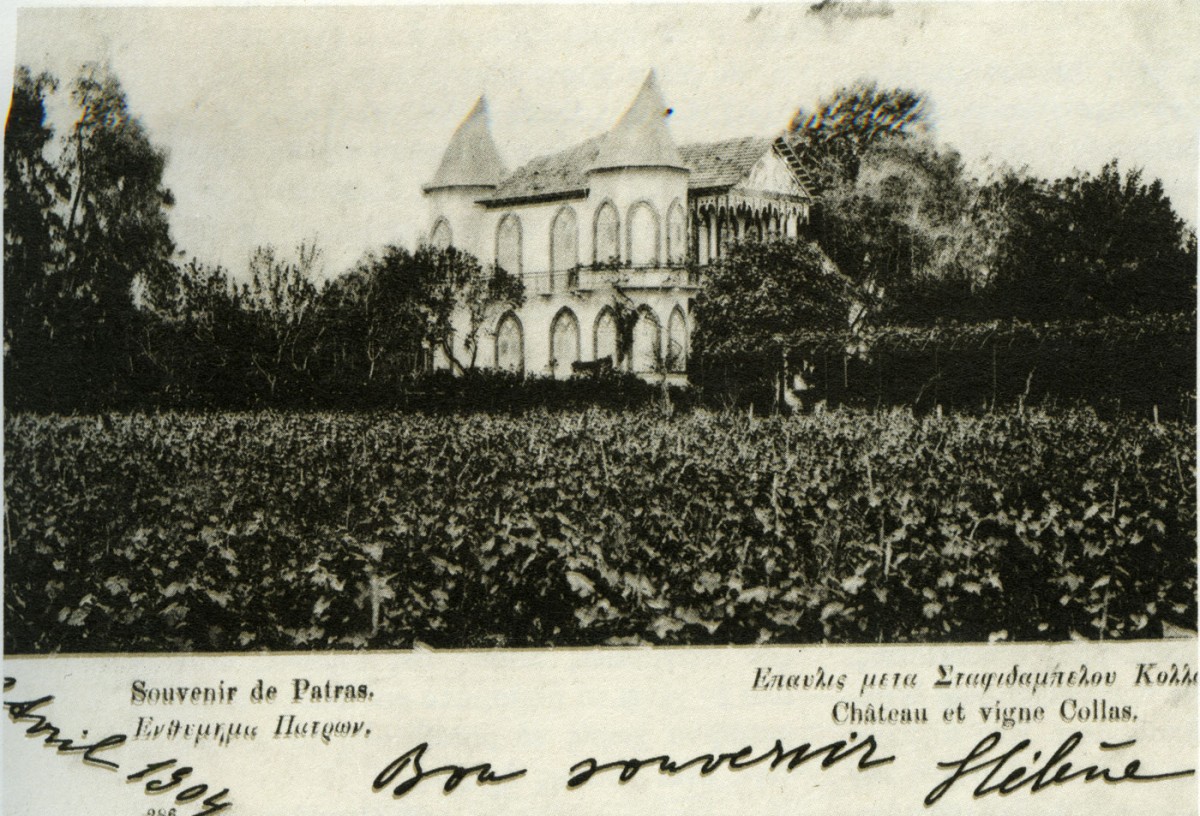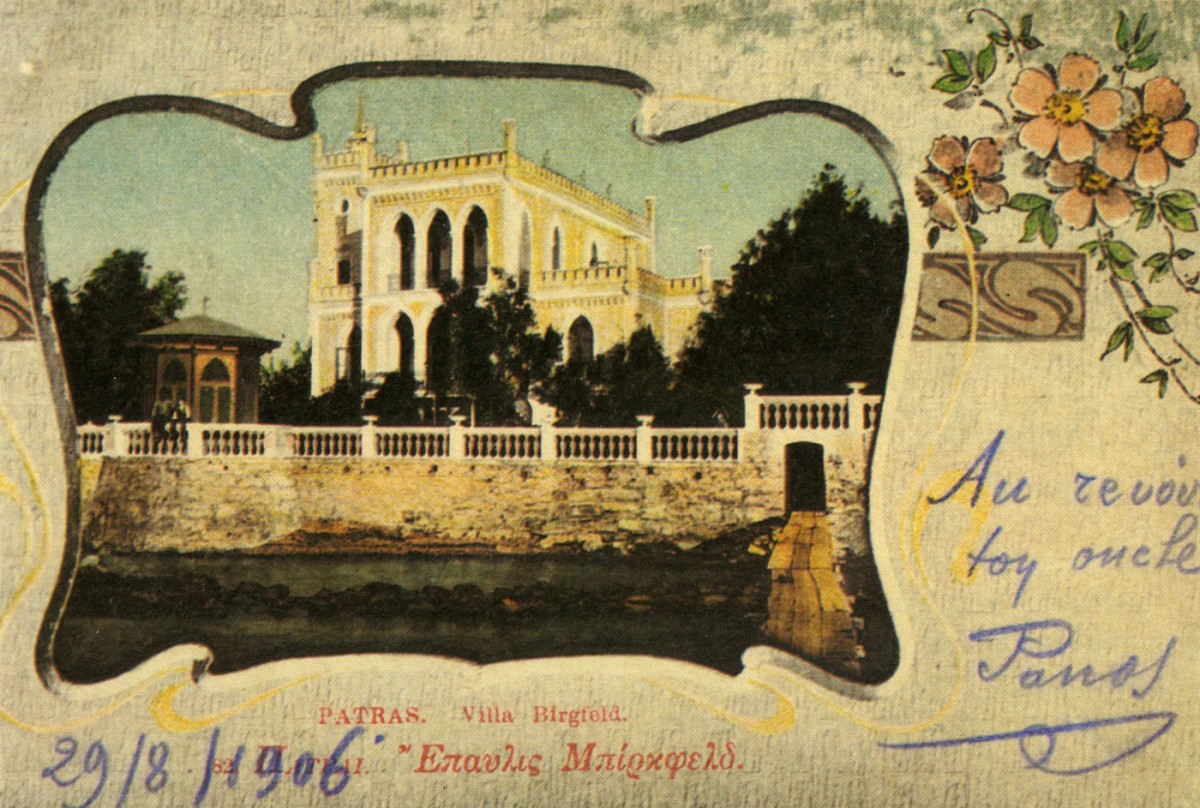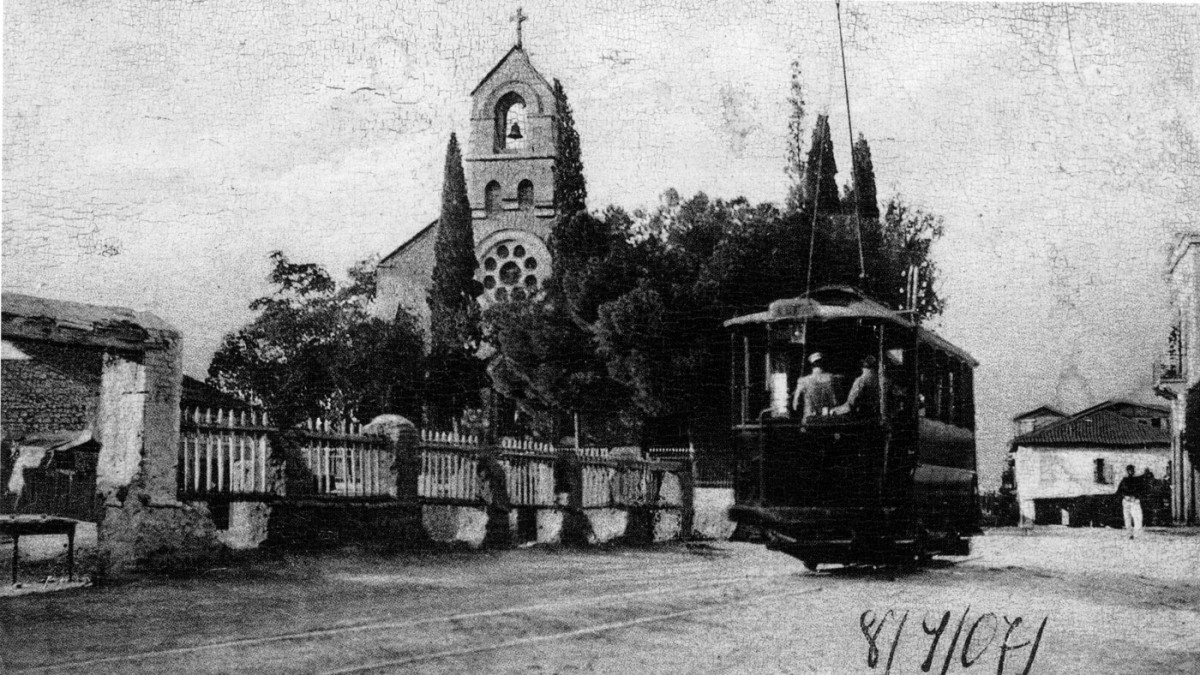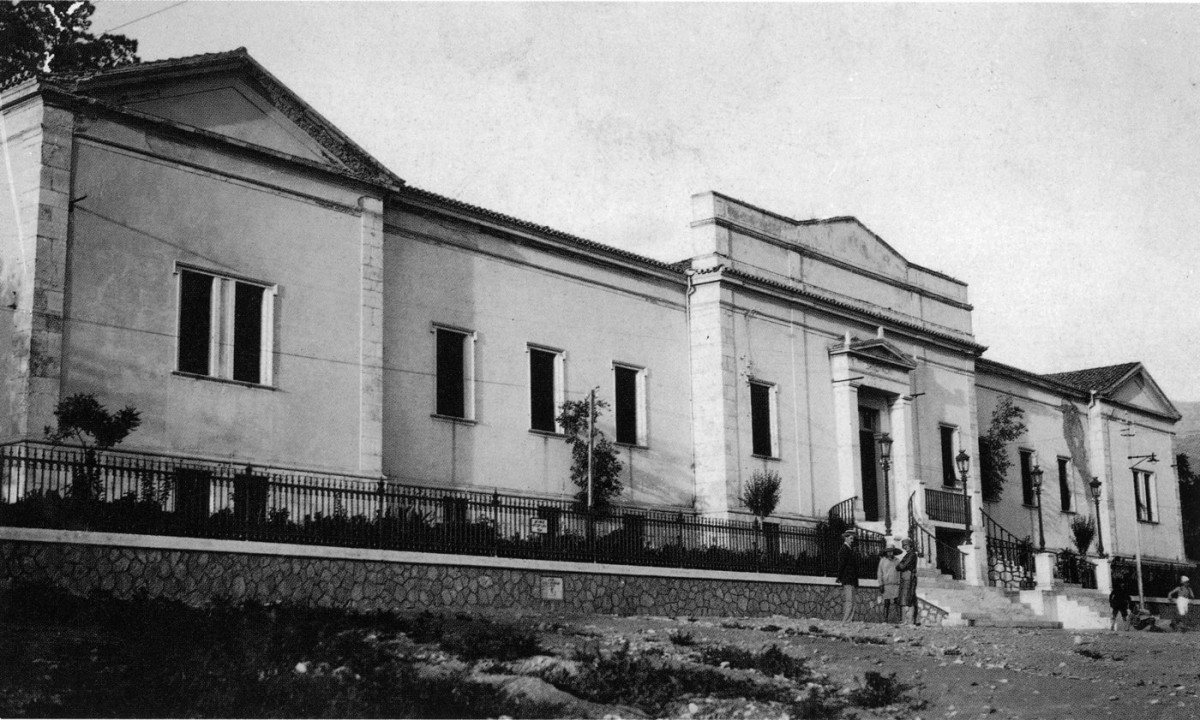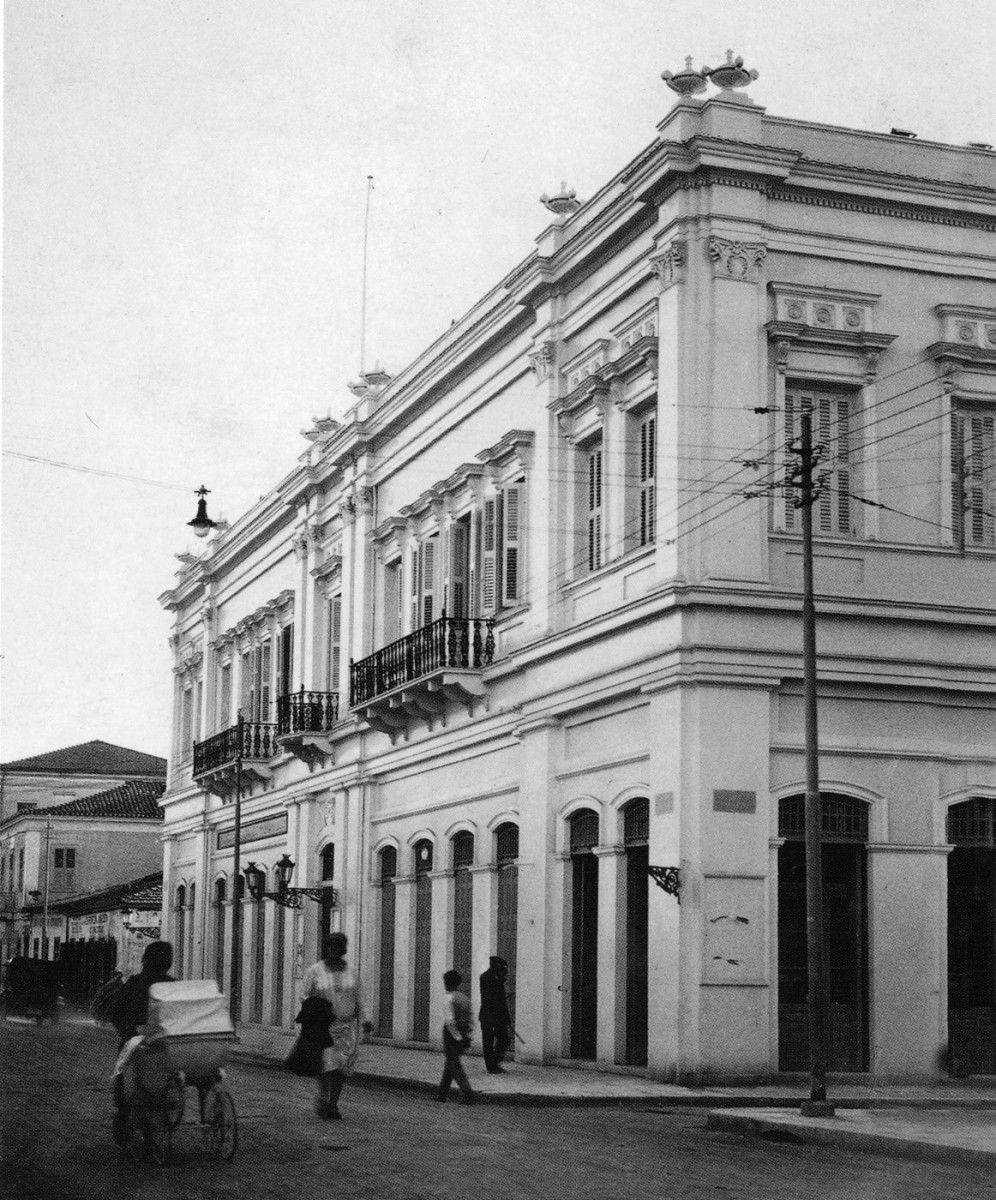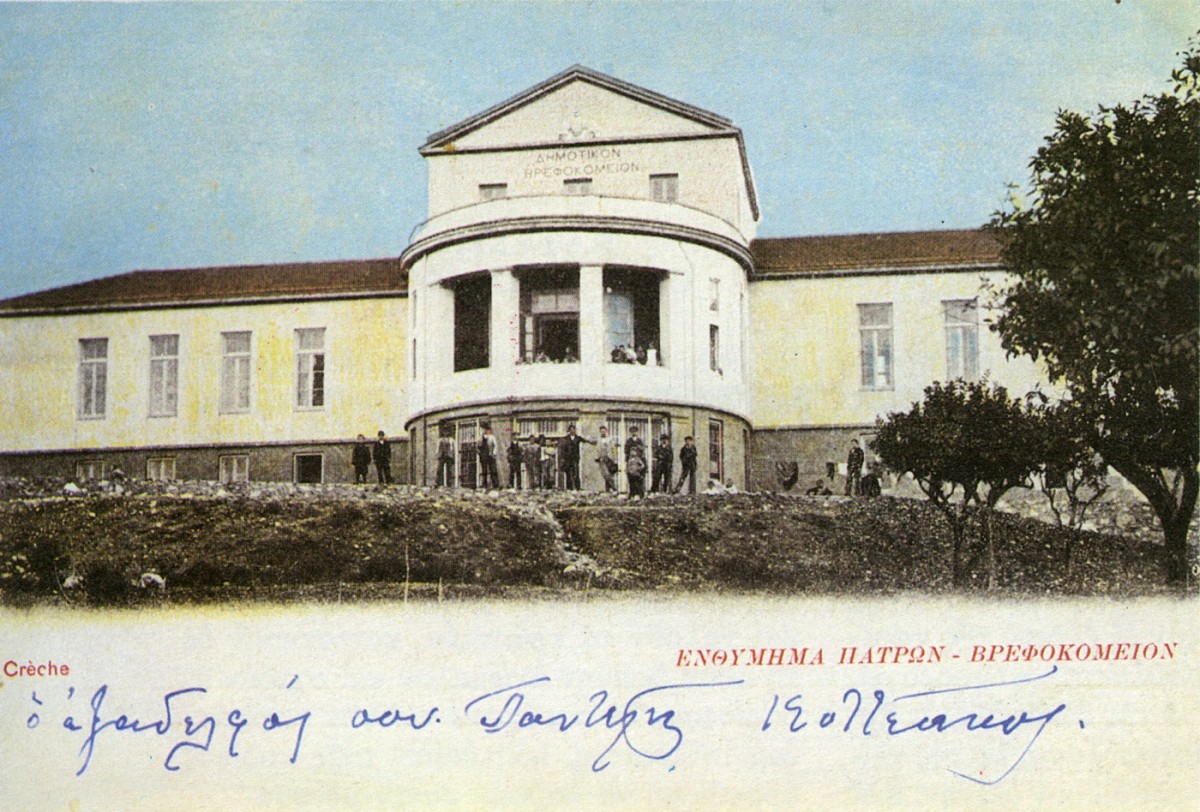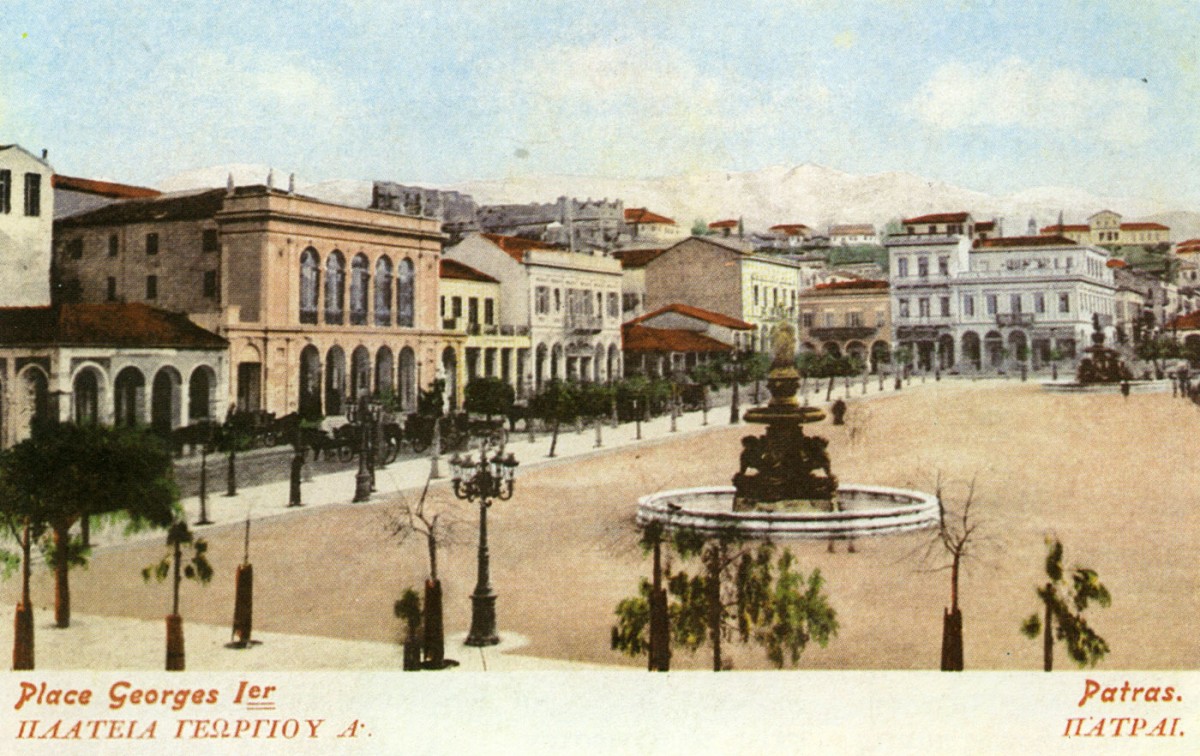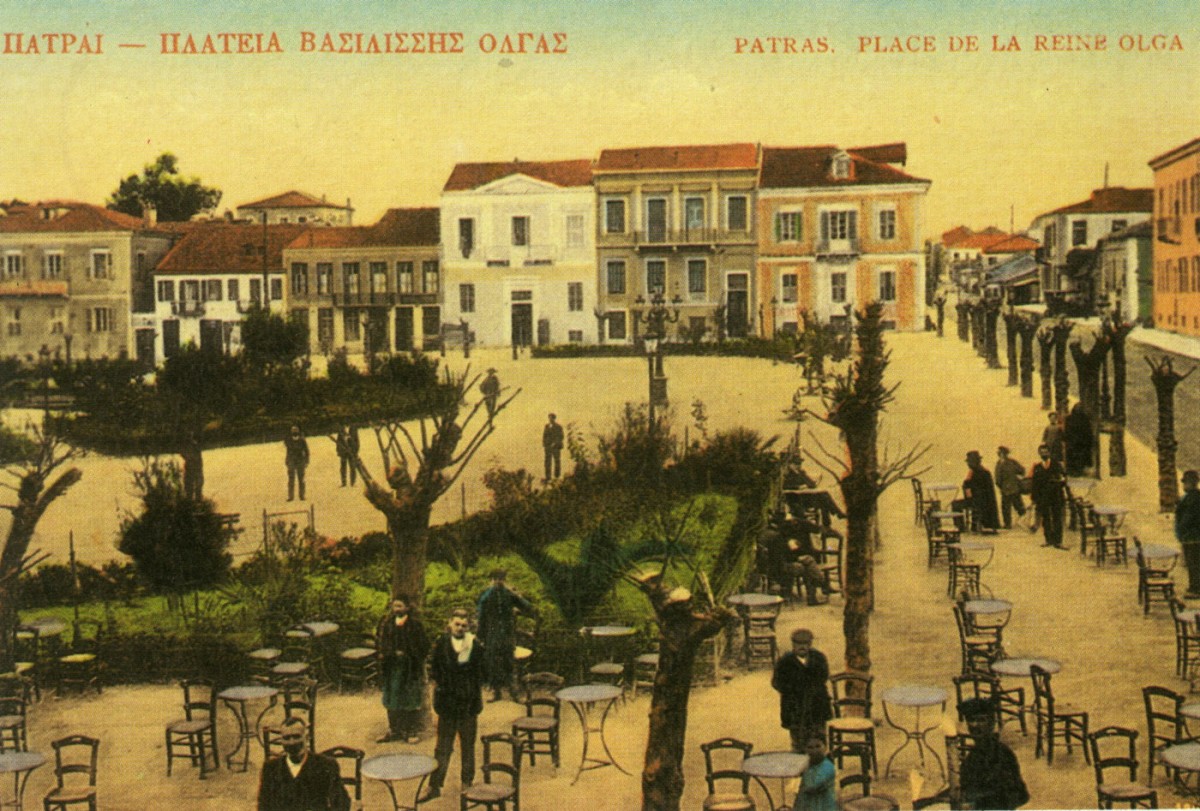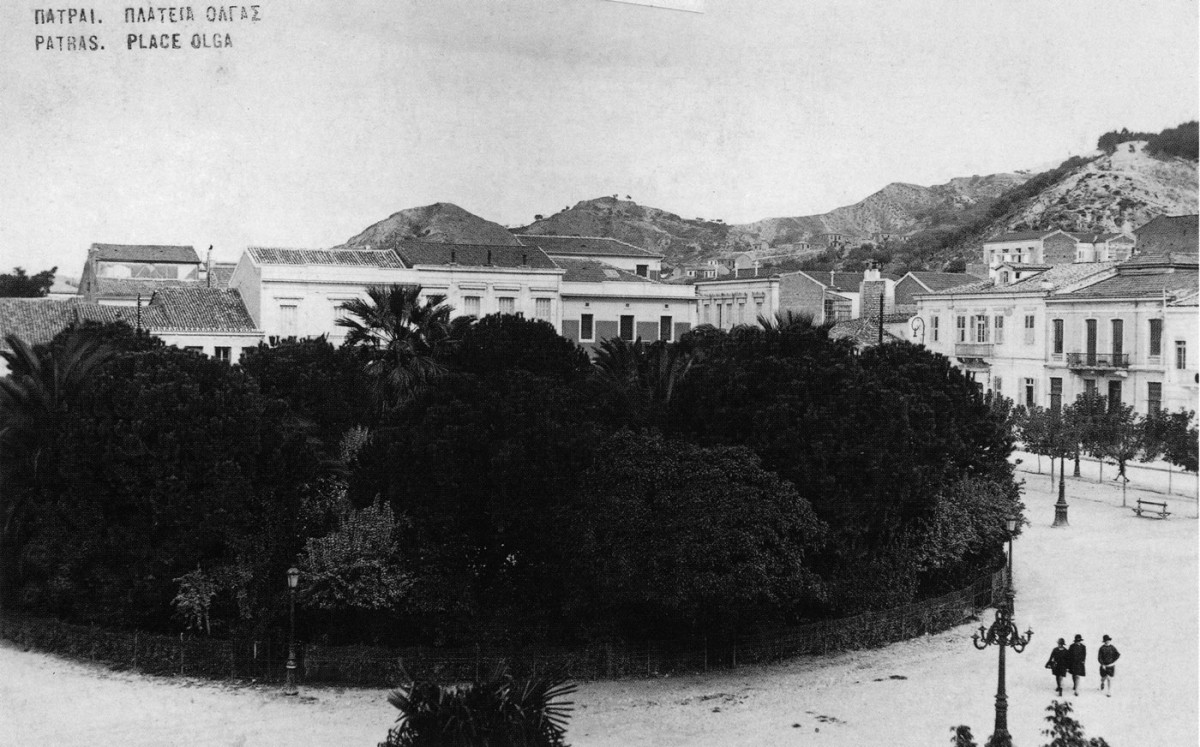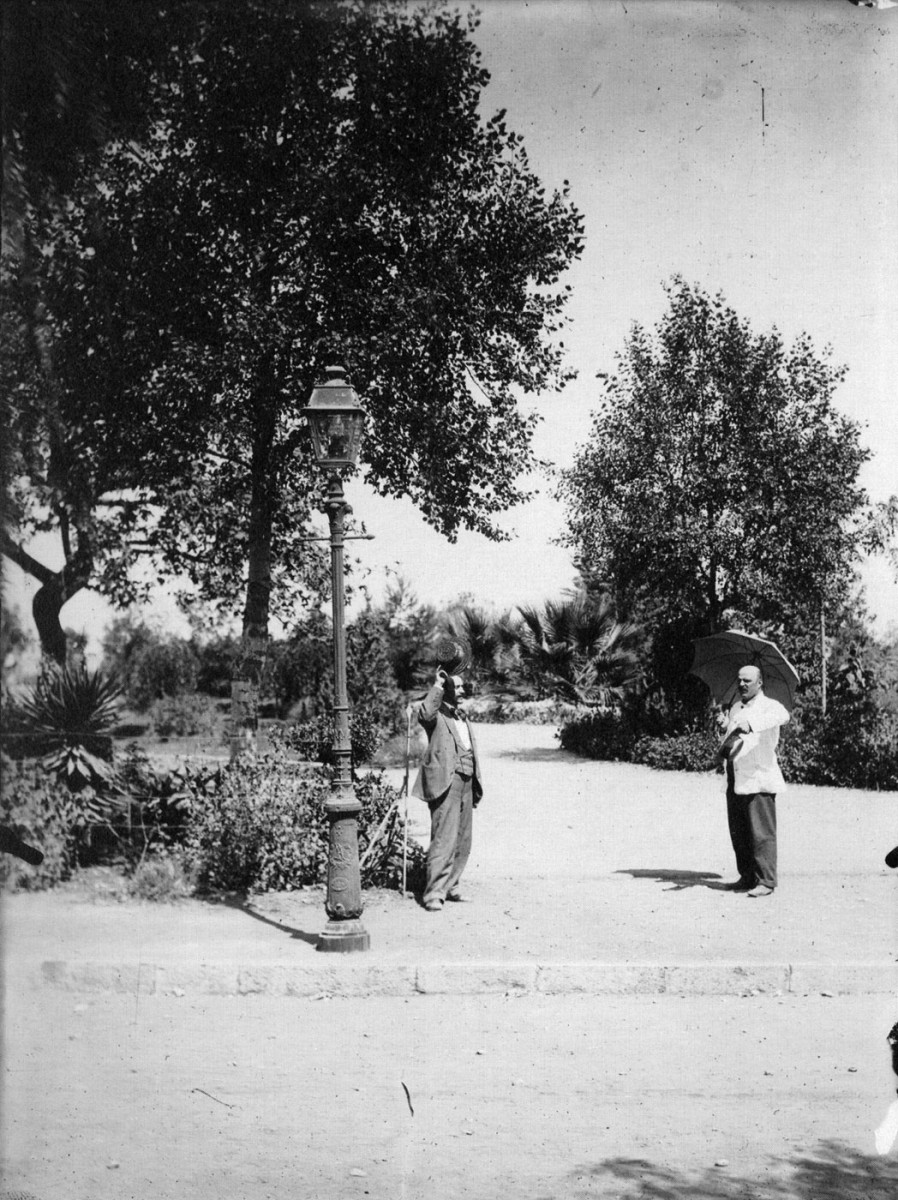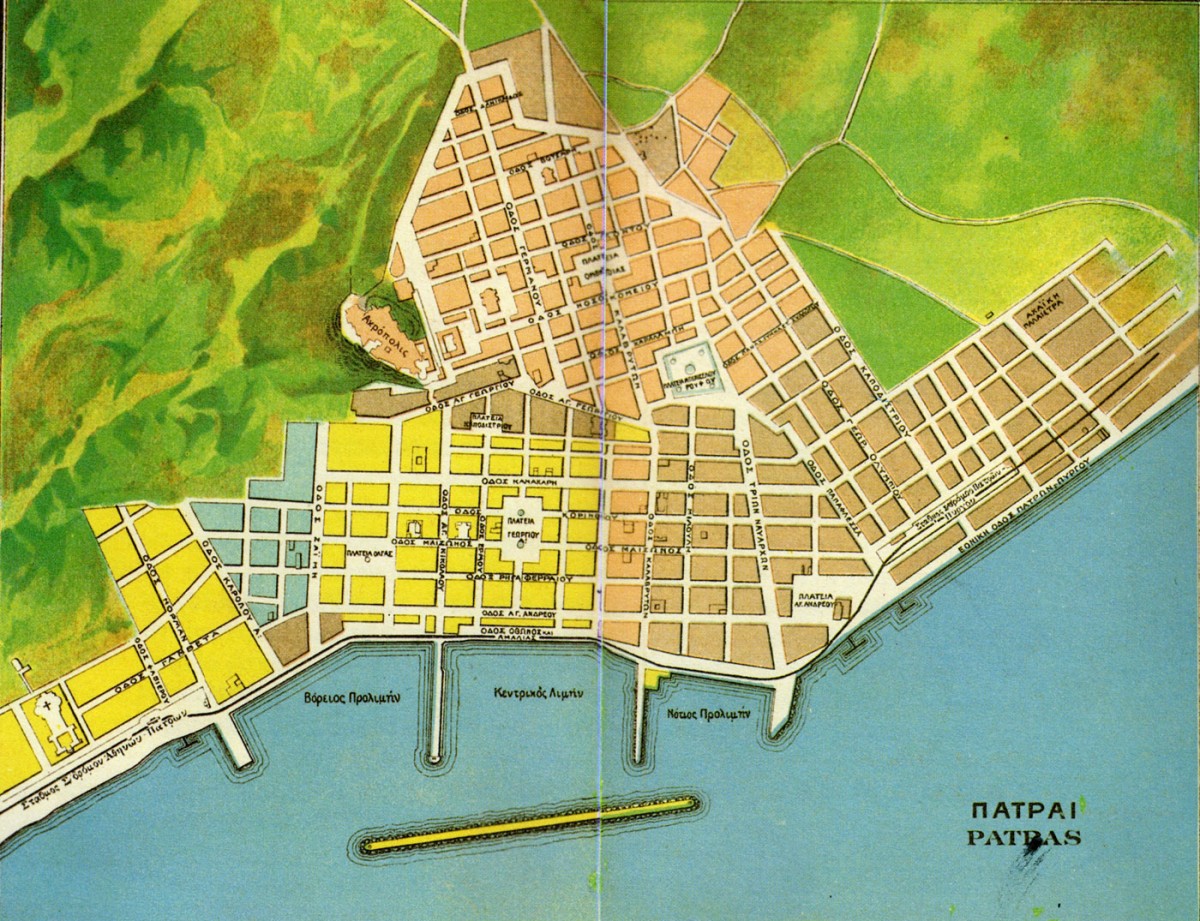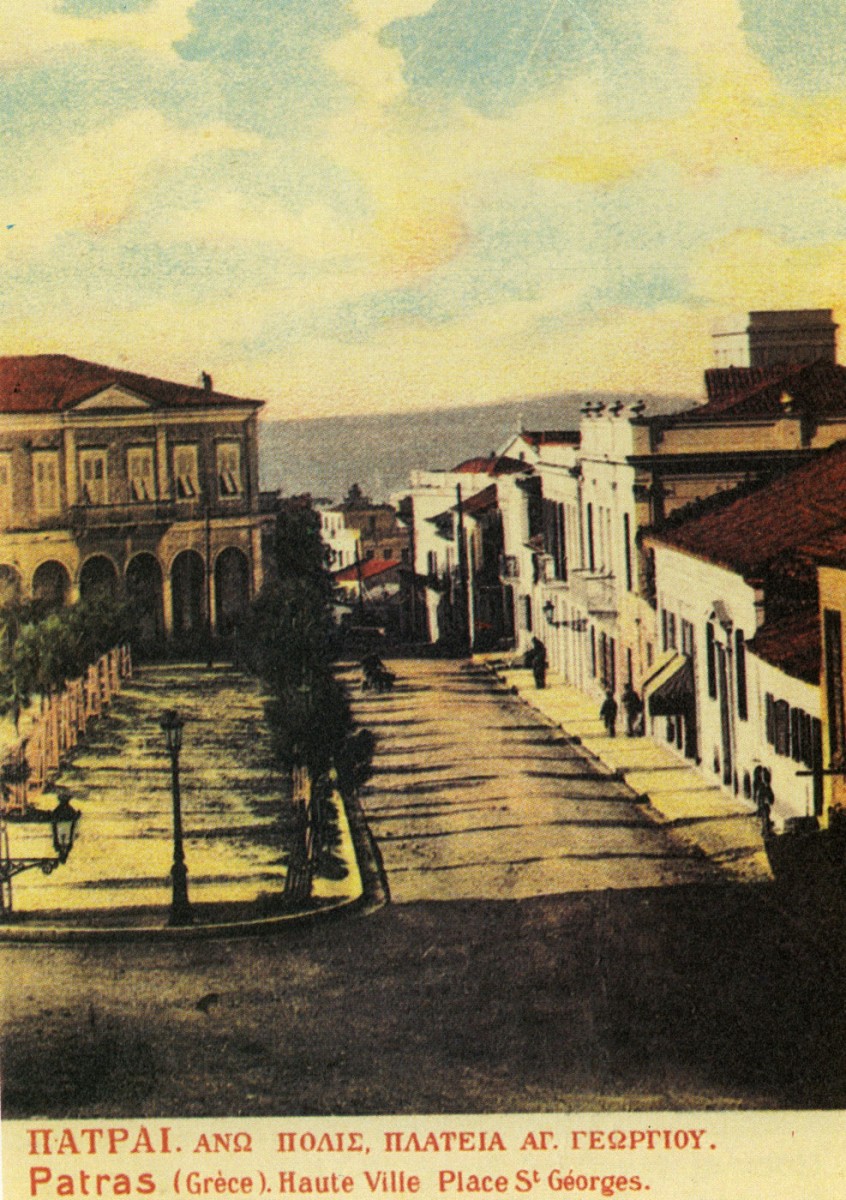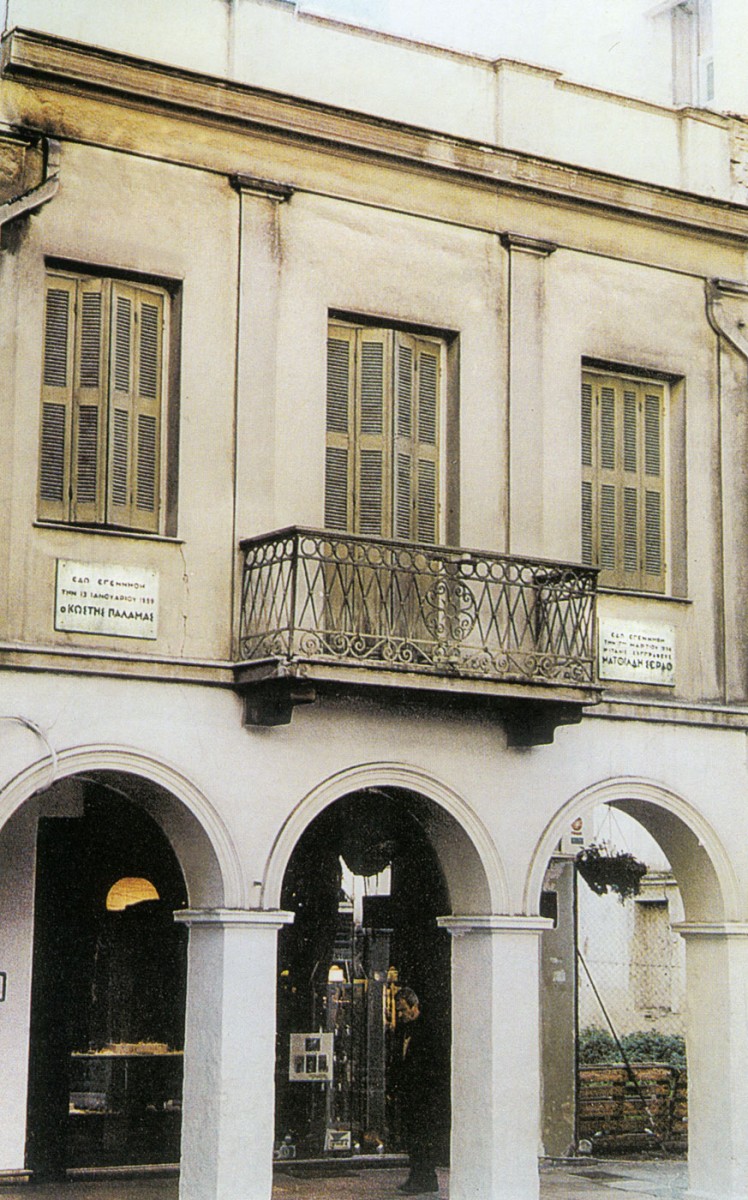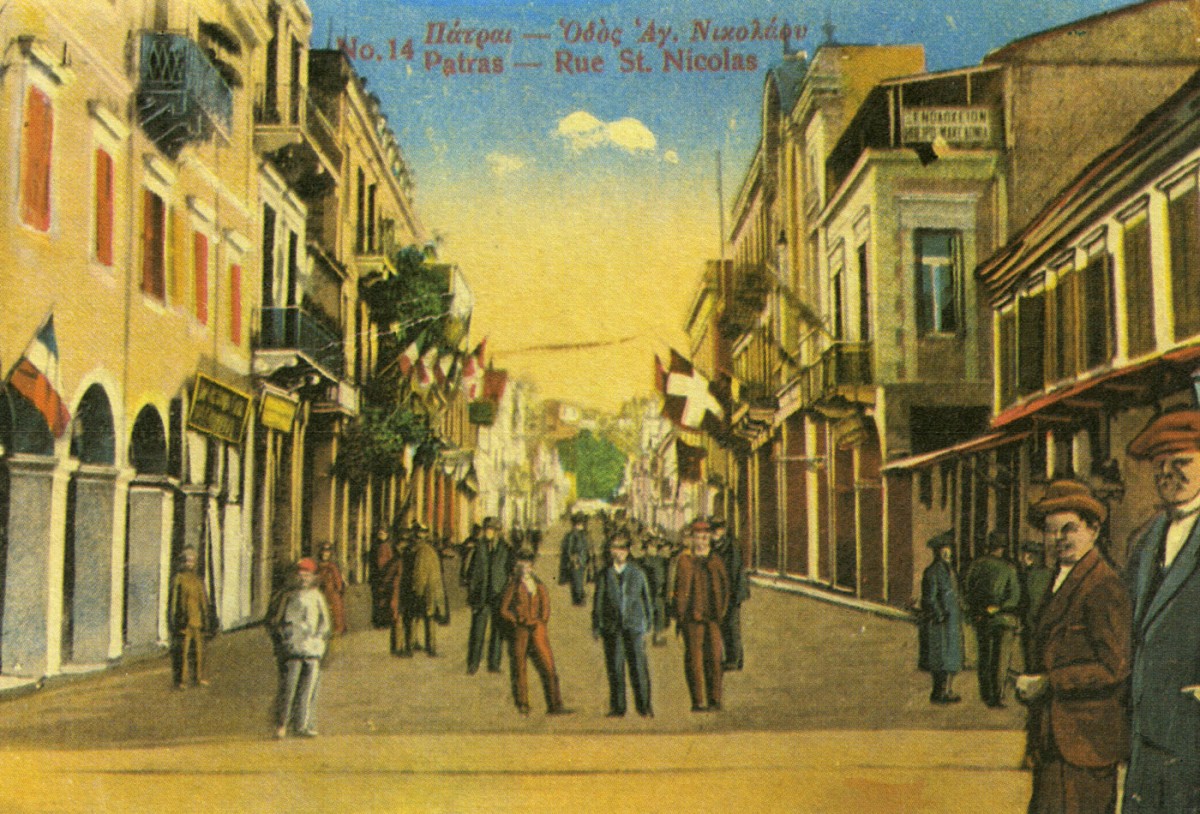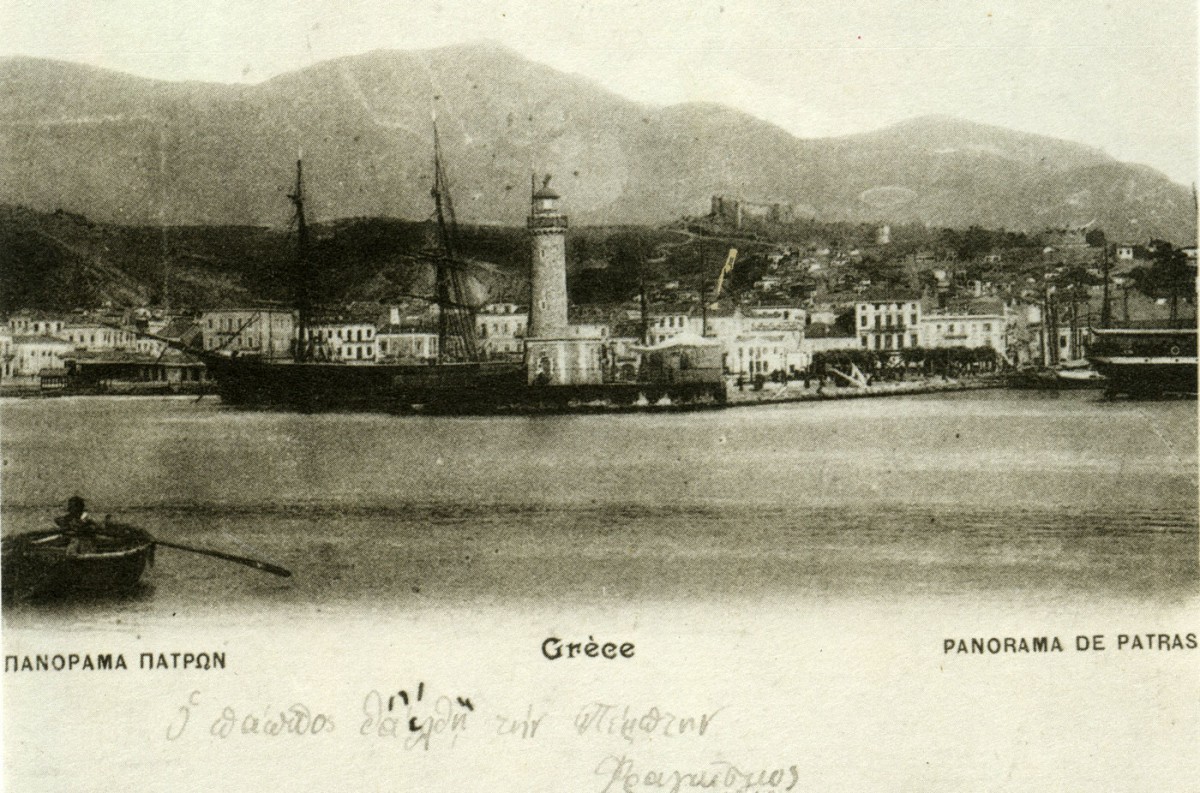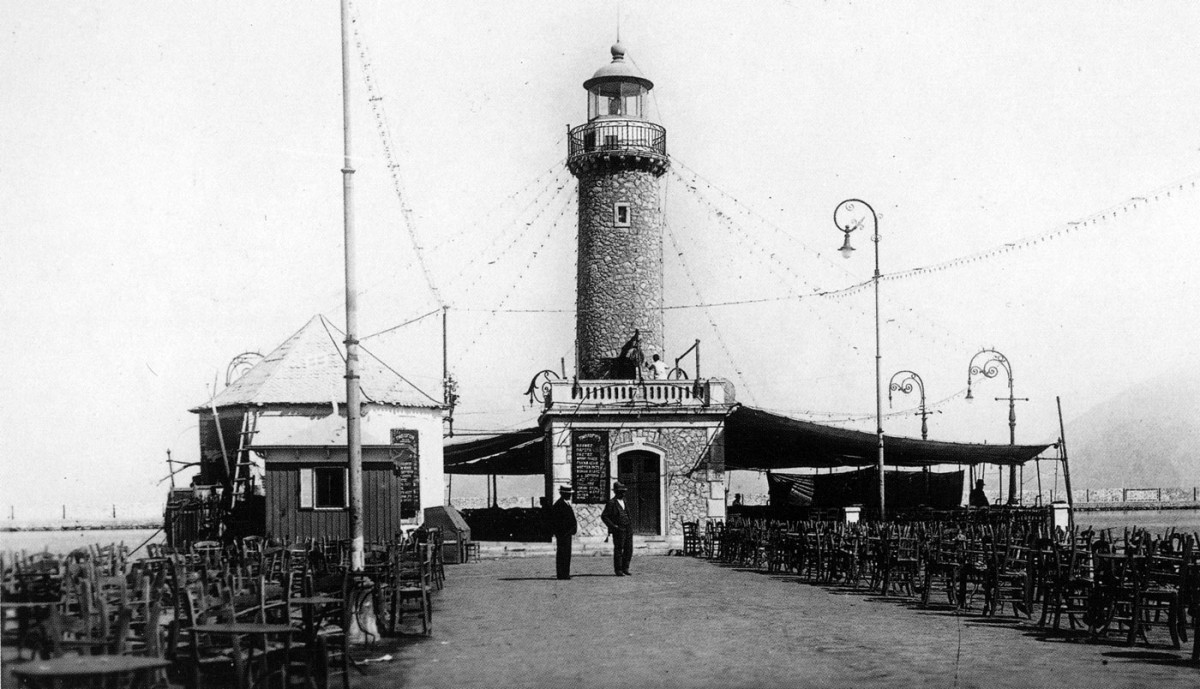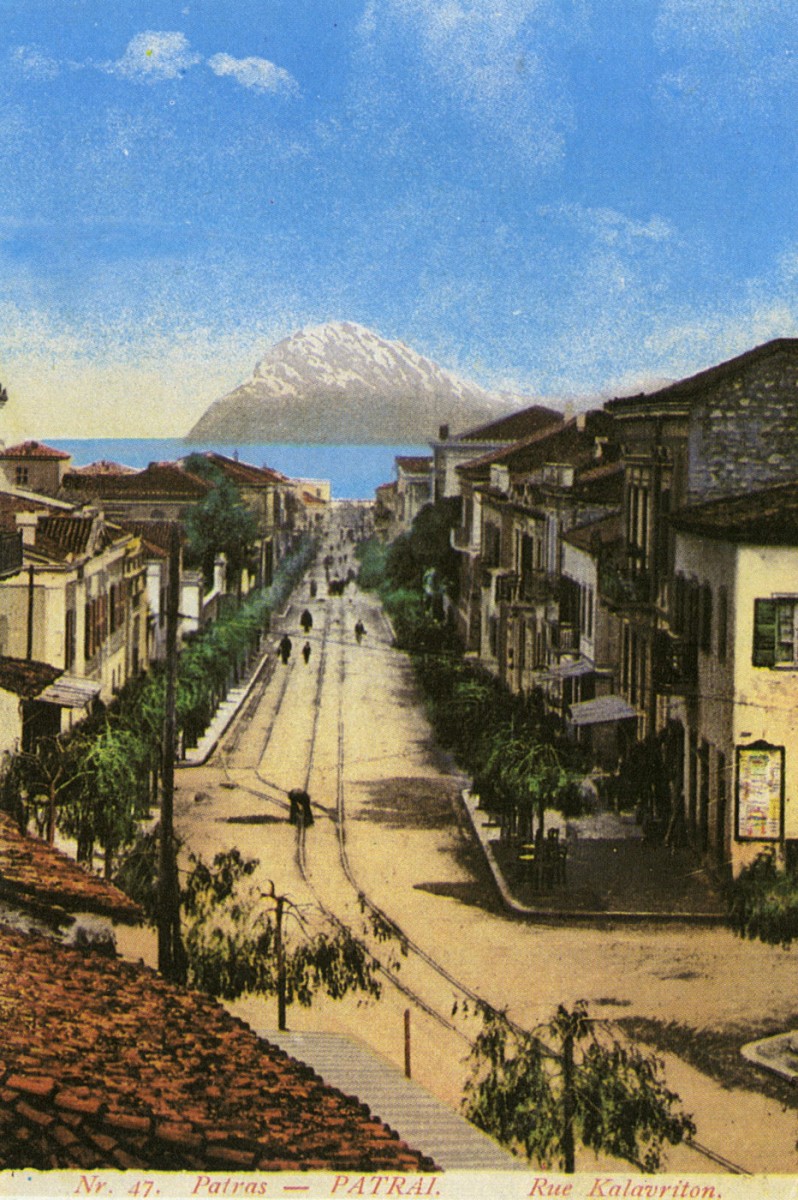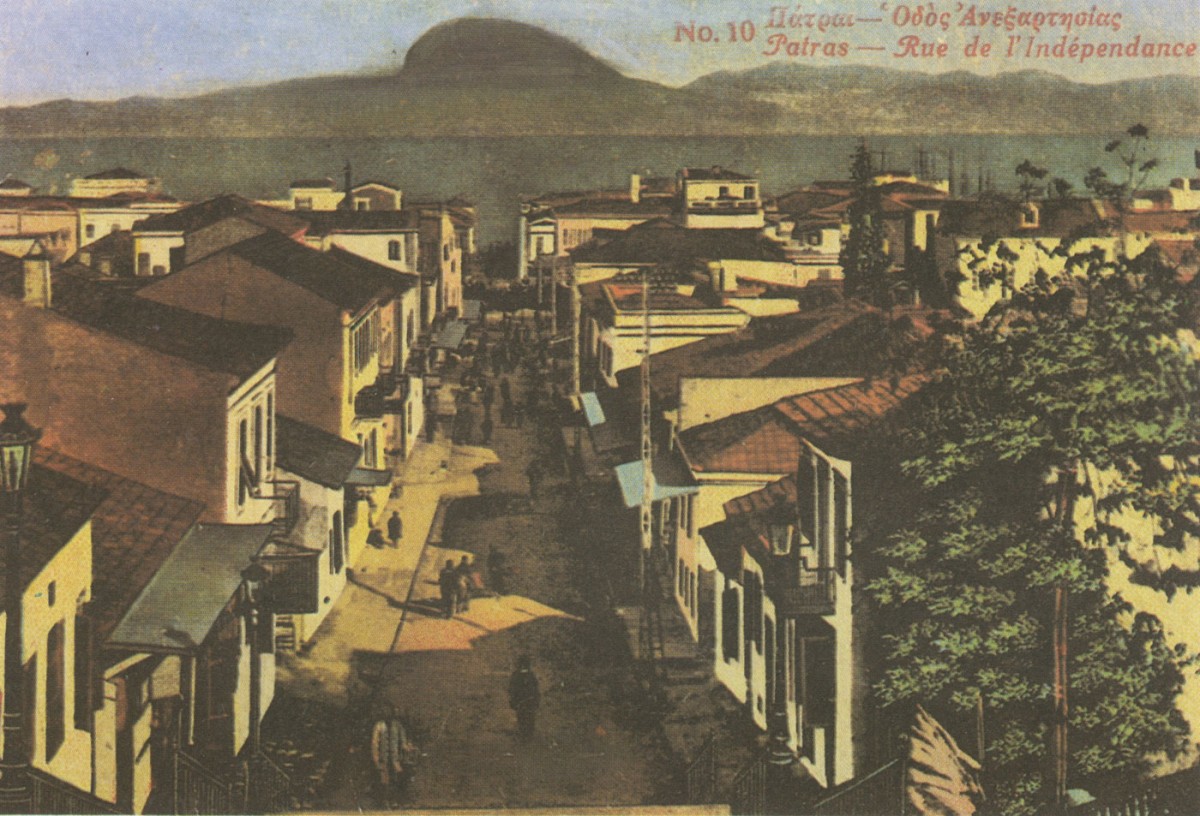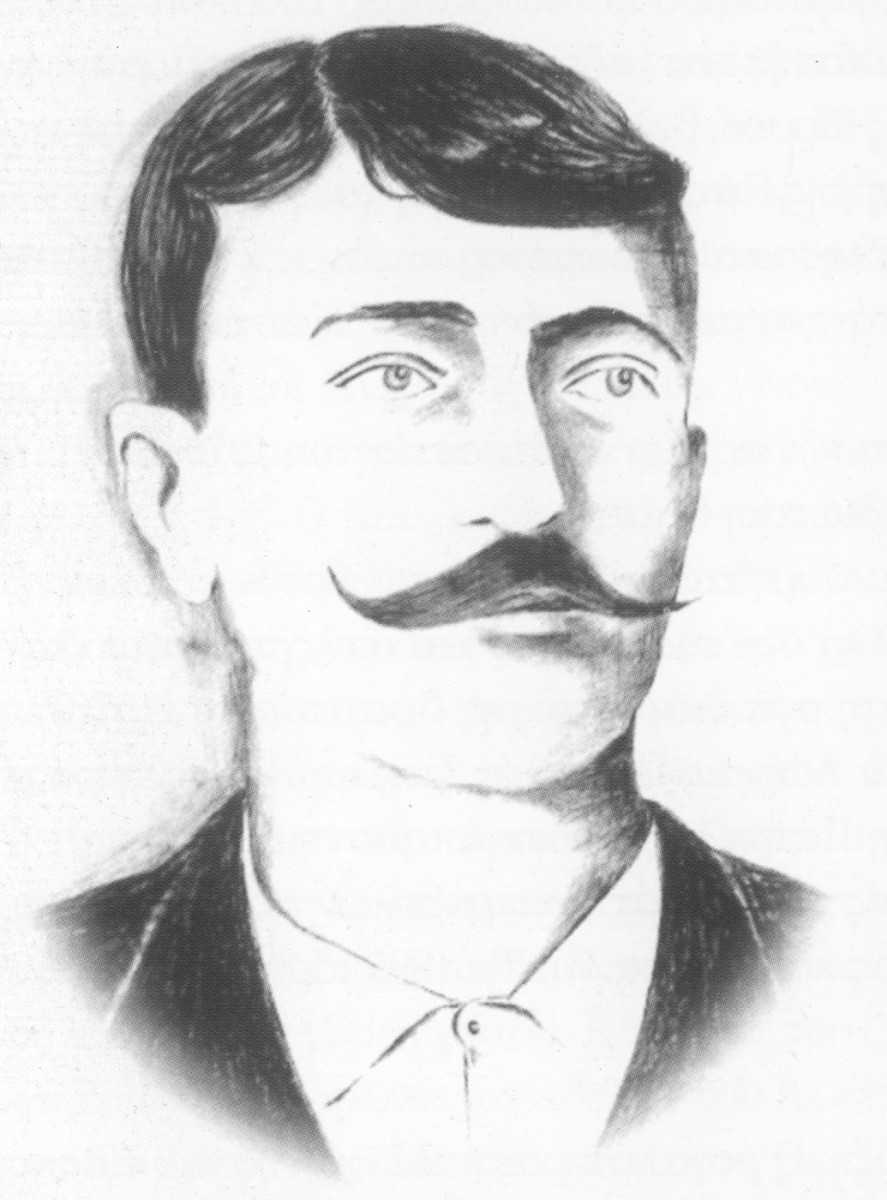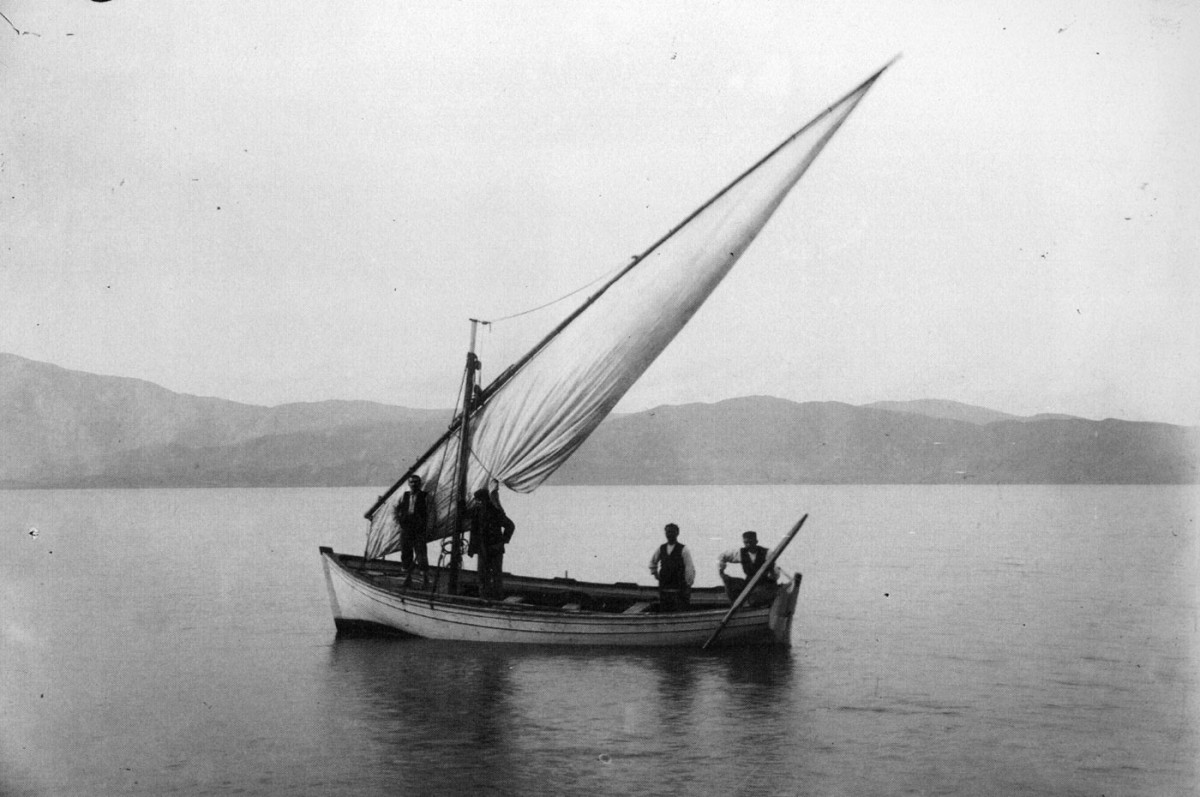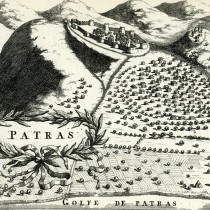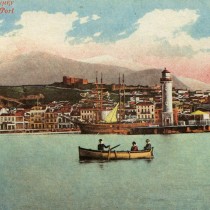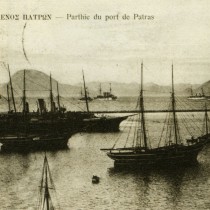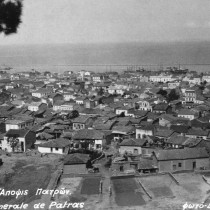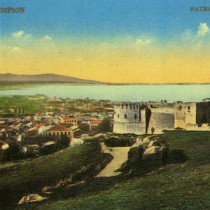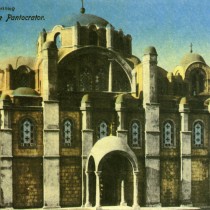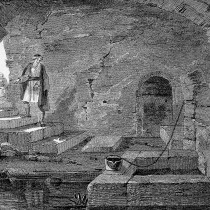The following article records the most important changes brought about in the urban landscape (note 1) of Patras by rapidly alternating events in the 19th century.
In the 19h century, Patras is a constantly changing city, an urban landscape where historical, social and economic changes take place.
The ‟Poppy of the Vilayet” (note 2) turns towards the sea and is in a hurry to shed its introversion and Ottoman past (fig. 1).
The events that shaped and redefined this city were: the struggle for independence, the formation of the new Greek state, the upgrading of its port with the export of black Corinthian currants (note 3) to the western Mediterranean and the prevalence of neoclassicism, for almost eighty years, as the dominant style of architecture in the construction of public, ecclesiastical and private buildings (figs. 2-4).
In the 19th century, apart from the locally born residents of Patras (note 4) there are also those coming from the Peloponnese, Zakynthos and Ithaca, provinces of the Ottoman Empire such as Epirus, Chios, Constantinople, Smyrna, Crete as well as the diaspora communities of Livorno and Trieste.
Living in 19th century Patras are Greeks, Christian Orthodox of local and foreign origin (note 5), Jews (note 6), but also enterprising Italians, Maltese, English and Germans, that is to say Catholics and Protestants.
Layer upon layer of time is deposited here. The city creates but also destroys historical memory. Its earlier inhabitants are Romans, Byzantines, Franks, Venetians and Ottomans.
The Roman Odeon, the Castle (fig. 5), the church of the Pantokrator (fig. 6), the sanctuary of Demeter with its prophetic spring and the old church of Andrew the Apostle on that same site, the unadorned basilica of Lysandros Kaftantzoglou on the sea front (note 7) with its well containing holy water (note 8) (fig. 7) are all timeless landmarks of a city reborn both from the ashes of 1821 and the marshes (figs. 8-10).
Unlike the middle and late Byzantine city insecurely huddled away from the coast on the heights near the Castle, 19th century Patras turns towards the sea which is its only limit. From 1830 to the end of the 19th century, Patras shows features of a dynamic city port in full swing. The part of the new Lower Town to be built first, is the one situated along the imaginary line linking the sea with Capodistriou Square, the Marcato of Patras, a point where the Lower Town meets the Upper and by extension its hinterland.
This part of the city is where the first impressive homes of the merchants are built and most commercial and industrial establishments operate, at least till the mid 1870s.
19th century residents of Patras think of their city as a place of trade, merchants and commercial exchange. The Lower Town is created as a continuation of the Upper and extends along the coast (fig. 11).
When liberated in October 1828, Patras is burned and full of ruins (note 9). On December 5th of that same year, the civil engineer Stamatis Voulgaris arrives in the city. Voulgaris (note 10) starts recording the existing state of things, namely whatever has remained of the network of buildings, the streets and Castle which is the main reference point in his urban plan (fig. 12).
Two streets intersecting perpendicularly survive from Patras of the Ottoman period. One is the Street that lead to Andritsaina, today’s Boukaouri Street and the other the ‟Bol sokak”, today’s Germanos Street, in the Upper Town.
In the Voulgaris plan, the total area of the city was 178.4 acres. This plan’s key features were its geometric composition with streets intersecting at right angles, symmetrical squares, arcades, green areas round the Castle, avenues of trees, the enhancement of the Roman Odeon and Stadium, at the point where the Upper Town connects with the Lower. The 1858 town plan of Patras is based exclusively on the Voulgaris plan, with some changes that restrict the city’s area to 159.2 acres, without however spoiling its original character.
In his book ‟Memories from Moreas” The French officer G. Mangeart (note 11) writes, among other things, about Patras of 1828:
‟The long narrow path leads to the fort that is ten minutes away from the shore (…). Every day new huts stand in a row, all of them wooden, but tidily placed in line (…)”
‟The churches of Patras remind one of the poverty of the early Christians. They exude such simplicity, just as ours display luxury”.
The governor Ioannis Capodistrias (1828-1831) placed particular importance on rebuilding (note 12) Patras which he intended as the small new state’s port of communication with Western Europe. The port defines the relation of the city to the sea, which in the absence of overland roads, remains the main communication route.
In 1828, there were 12 professional unions ‟guilds” (note 13) functioning in Patras, which had ceased their activities during the Struggle for independence. These were the guilds of grocers, rope makers, tailors, hosiers, tanners, locksmiths, steel workers, builders, goldsmiths, barbers and cobblers. New conditions arising after independence demanded that the guilds be re established.
Towards the end of the 19th century, only two guilds out of twelve were active, those of the builders and tanners.
An accomplice in the murder of Ioannis Capodistrias, who also saw to the rebuilding of Patras in the 19th century, was a soldier from the civic militia called Andreas Georgiou (note 14). He was punished for his deed by the Military Court with a ten year prison sentence, shackles on his feet and public chores.
In the late 1820s, Capodistrias chooses Patras as the Greek state’s exit towards Western Europe and plans its rebuilding (note 15), the repair of its aqueduct and its conversion into an urban centre.
On the eve of the Struggle of Greek Independence, Patras was flourishing, compared to other cities of the Peloponnese, because of its currant trade. After the eight year Struggle for independence, when the city was handed over by the Ottoman governor AdjiAbdulach to the French general Antoine Virgile Schneider (note 16) and his representatives, its condition was lamentable, both in terms of urban planning, housing, economy and trade. On the coast, according to Georges Mangeart (note 17) there were ruins of a large church of Andrew the Apostle and in its place stood a humble little church. Taverns and cafes sprung up one after the other, most of them bearing French names such as ‟Cafe Bourbon”, ‟Cafe Parisian”, ‟ Cafe Royal”, ‟Cafe Militaire”. Apart from the small church of St Andrew there were other churches dedicated to the Virgin Mary, St Demetrios and two to St Nicholas (note 18). These churches were built of lime, earth, gravel or stone. They were one room cells with a door and an opening for a niche, as thick as the wall.
On the site of the Castle, in front of its walls and almost surrounding it, were several huts built on stakes.
In 1828, immediately following liberation, all the old inhabitants of Patras arrived in the city. With them came people from Mainland Greece, the Ionian Islands, the Peloponnese and other parts, who built rudimentary huts to shelter in, workshops, cafes and taverns. Soon the city’s population grew to 4,000 inhabitants. These people set up their homes and rudimentary shops among the marshlands of Patras, in a filthy muddy landscape, without roads, pavements, sewage and adequate water supply.
On April 17th 1829, in front of Patras’ ‟Local Dignitary” P. Palamas, with the approval of both the Governor Al. Axiotis and ‟the citizens” ,Master Craftsmen on the one hand and Elders of Patras on the other signed an contract of eight paragraphs ‟ to repair the οld Roman aqueduct”. The Master Craftsmen had 100 craftsmen under their command. The Elders would provide them with necessary materials. The cost of the whole repair came to 35.000 piastres in Turkish currency (note 19).
The building of churches is undoubtedly an expression of worship. The church sanctifies and gives names to the quarters in the city. In 19th century Patras, there were quarters named after the Pantokrator, Pantanassa, St Andrew, St Denis, St Gerasimos and the old neighbourhood of St Nicholas Vlateros.
During the time of the metropolitan bishop Germanos III, St Dimitrios (note 20), in the Upper Town, was Patras’ cathedral. The Pantokrator church took its place between 1829 and 1845. From 1845 to 1856 it was replaced by the then newly built church on the sea front of Andrew the Apostle, on the spot he had been martyred, next to the prophetic well of Demeter (note 21) (figs. 13, 14). From 1856 to the present, the city’s cathedral has been the church of the Evangelistria (Annunciation) on Maison Street, in the heart of the Lower Town (fig. 15).
With the exception of the Pantokrator, all churches in 19th century Patras are typical examples of neoclassical church buildings.
Arranging space and organizing the urban or rural landscape is one of authority’s ways of expressing itself (note 22). In Patras, the plan by St. Voulgaris is the realization of this process, with its modifications and applications dictated by the conditions and interests of the period. Eight years after its being liberated, the city commissioned Lysandros Kaftantzoglou, the era’s most well known architect (note 23), to build the church of Protoklitos, the ‟Old St Andrew”. Construction work began in 1836 and was completed in 1845.
Six steam powered factories operated in the quarter of St Andrew on the south side of the city and employed 765 workers. The factories were predominantly for yarn manufacturing and packing crates for currants.
In the district of St Gerasimos there were five steam powered factories employing 790 workers making packing crates. The draining and covering over of the marshlands (note 24) between the districts of St Andrew and St Gerasimos began in 1883, when Th. Kanakaris was mayor of Patras, These swamps were the cause of infectious diseases and the Press of the period called the region a ‟vast hospital”.
Throughout the 19th century, the city’s demography was chiefly formed by the new populations. These, with the exception of the merchants, settled in regions outside the approved town plan, on the north or south side of the city. At the start of the 1870s, quarters of the city have been formed that were distinguished both for the similar economic activities of their residents and their common origins. The quarter of St Gerasimos, on the south side of town, is inhabited by people from Cephalonia (note 25). In 1875, 4,000 Cephalonians in Patras belong to the clubs of “St Gerasimos” and “Andrew Metaxas”. Along the coast, right across the city, there are warehouses for currants and currant packing factories. The working class of the time was situated mainly in the districts of St Andrew, St Gerasimos and St Denis.
The district of St Denis had been established on the north side of town, outside the approved city plan and was inhabited mainly by Italians and people from Zakynthos.
During the 2ndperiod of Turkish rule, there were no Italians in Patras. There is evidence of Italians first appearing in Patras in 1828 and these were Neapolitan fishermen who made up the nucleus of the “Italian Catholic Parish”. All through the 19th century, this parish followed an upward course. Most of its members were farmers, fishermen, builders, millers, coach men, workers in currant warehouses, bakers, brewers, pastry cooks, musicians and typographers.
The Catholics in Patras, Italians and Maltese, made up a dynamic foreign community which reached its peak of prosperity at the turn of the 19th century.
The Governor Ioannis Capodistrias, responding to a request by the Catholics of Patras, gave them a piece of land of a thousand cubits in the Lower Town for them to build a church. It is the property on Maison Street where the Catholic church of St Andrew is situated.
At first, a small wooden church was built which was later pulled down and a bigger one built in its place, officially inaugurated on July 17th, 1841. 84 years later, in 1925, this was also demolished and the Catholic church, surviving to our times, was built in its place (note 26).
The period between 1789 and 1848 is the age of Revolutions (note 27). After the defeat of national liberation uprisings in Italy, many political refugees fled to Patras. From July 1849 till October of that same year, more than 700 officers, soldiers and civilians fled to Patras.
Among the refugees (note 28) were several artists, journalists and intellectuals, ten doctors and four lawyers. The relations between the Italians and the people of Patras were very good ones.
After Italy’s Unification in 1861, known as the Risorgimento, almost all the political refugees left Patras. The Italian community continued to flourish till World War II when Patras was bombarded by the Italians.
The district of St Denis, where the city’s first winery was founded, had 6 steam powered factories by the end of the 19th century employing 500 workers. Flourmills were predominant.
In 1883, the district of St Denis was incorporated in the urban plan.
Four factories, employing175 workers, operated in the Pantanassa district in the Upper Town; these were 2 oil presses and 2 factories for making noodles and flour. The greater area of the Pantoktrator and the Pantokrator itself is one of the timeless city landmarks, from Roman times to Turkish Rule and from the 19th century to the present.
In 1847, the Pantanassa church’s corner stone was set in the Lower Town. The designs were made by the architect Konstantine Frearitis, the first dean of the National Technical University of Athens. Pantanassa’s inauguration (note 29) took place on the 30th August 1859.
In the Pantanassa district there were 5 steam powered factories, mainly distilleries.
The corner stone of the Evangelismos (Annunciation) church (note 30) was set in 1842 and completed 14 years later. Contributing generously towards its building were the city’s merchants from Epirus who lived in the area and who had till then been attending services at the small church of St Nicholas Molos (Pier) opposite the “Ideal” cinema (note 31).
The central district of the Evangelistria, at the heart of the Lower Town, remains the exclusive place of merchants’ residencies and activities.
Situated in the Evangelistria district were book shops, private schools, most homes of merchants, luxury fabric shops, timber shops, tailors, pastry shops, shops selling beer, banks and after 1871-1872 the ‟Apollo” Municipal Theatre. The Theatre was designed by Ernst Ziller (note 32) in King George I Square , on the site chosen by Stamatis Voulgaris in his 1829 urban plan, when designing the Lower Town (note 33) (figs. 16, 17).
Some shops on Ermou Street lead up the hill towards Capodistria Square, the ‟Marcato” (figs. 18, 19).
In 1874, the only factory for processing currants and grain in the Evangelistria district was established on the ground floor of the house of Kremmydis, an important merchant, on the corner of St Nicholas and Maison Streets. This building survives to the present day. The Kremmydis’ house was used both as a residence and as shops and is one of the oldest buildings in the Lower Town. It belonged to the family of Kremmydis a currant merchant and acquired the name of ‟little palace” having offered hospitality in 1857 to the royal couple Otto and Amalia. The neoclassical residences of Patras were built to give their owners social status rather than for meeting their housing needs. The dream of the 19th century bourgeois merchant of Patras was a grand house of marble, furnished from England or Trieste and a mansion in the city suburbs (figs. 20-22). 19th century Patras was one of the most important commercial cities in Greece. For the residents of Patras of the time, their city was a place for trade. Profit was always trade’s objective and the former was recycled in businesses but also displayed.
The elegant and cosmopolitan foreign and local merchant class of Patras survived as a solid bourgeoisie for only three generations. It was subsequently hit by the currant trade crisis and collapsed.
In December 1828, the British Consulate of Patras was set up again and a Consul was appointed. The British community had been numerous since the period following the revolution (note 34) and grew constantly, retaining its strength till the 1930s.
A law passed in 1867 granted a ‟national plot of land” for the construction of the Anglican church of St Andrew (note 35), between the streets of St Denis, Kapsali, Karolou and Chateaubriand. The corner stone was set in February 1872 and the church was completed the same year, thanks to a generous contribution by the prosperous British community of Patras. The stones used for the building’s exterior decoration were transported from England as ballast for the ships coming to Patras to load cargoes of currant (fig. 23). The Anglican church was a meeting place for Patras’ English and German Protestants.
A leading role in the shipping business was played by George William Crowe and WilliamMorphy who came to Patras in 1864 and established the shipping company of “William Morphy and Son”. He was also a pioneer in utilizing the waters of the Glafkos river for supplying the city with electricity and along with Crowe and Hancock became very active in both cultural and social matters. When currant production was destroyed, during the economic crisis of 1854-1855, Th. Wood, another Englishman in Patras, brought cargoes of wheat and flour at his own expense and distributed them among the city’s needy residents. In 1840, The British founded the Ionian Bank in London, with a branch in Patras.
In the ‟English Quarter” on the south west side of Patras, Crowe and Stephens built their mansions. Today this quarter belongs to the Paralia (Sea front) Municipality.
In Patras’ Lower Town, there were many marshes in the plain causing malaria type fevers and the plague (note 36). During the period of Venetian Rule, prisoners with a death sentence were sent to Patras to die of malaria related diseases. General Maison’s troops were badly infected by malaria induced fevers and the Pantokrator church in the Upper Town was converted into a makeshift hospital for their care (note 37).
The first trained doctor settled in Patras in 1833.He was Theodosios Tsilianis from Ithaca (note 38) who had studied Medicine and Philosophy in Italy. Till the end of the 19th century, the pharmacies in Patras also functioned as surgeries (note 39). Patients were taken to the pharmacies to be examined and have their injuries treated. Doctors saw their patients in pharmacies and offered their services there. This habit died out gradually in the 20th century with the wider use of the City Hospital and the setting up of private clinics and surgeries. Towards the late 19th century there were 14 pharmacies operating in Patras, run by pharmacists with degrees and 6 pharmaceutical warehouses. There were 57 doctors, holders of degrees in Medicine, many of whom had studied abroad and 20 midwives most of whom were graduates of the Obstetrics School in Athens (note 40). With the Royal Decree of February 9 1851, a three year tax of 0, 25% was imposed on all imported goods in the area of the Municipality of Patras, ‟exclusively for the building of the Patras Municipal Hospital”. A few years later, a 3,650 square metre plot of land was found south of the Castle for the hospital to be built, whose designs were carried out by the Danish architect Christian Hansen (1803-1883) (note 41). On October 15 1857, King Otto placed the corner stone of the Patras Municipal Hospital. Construction work started almost immediately and was completed in 1871. The hospital officially started to operate (fig. 24) on January 1 1872 (note 42).
Patras’ City Hall has been housed since 1897 in a neoclassical building on Maison Street. This was originally the residence of the currant merchant Ioannis Makrygiannis and after 1886 of his brother Rallis Makrygiannis. The Municipality rented the building in 1897 and converted it into a City Hall (figs. 25, 26).
In 1911 Mayor Dimitrios Votsis bought the building on behalf of the Municipality at an auction set up by the National Bank, under whose jurisdiction the building had come after the currant trade crisis (note 43).
The bourgeois merchant class of the city became the target in a local satire ‟Kourambiedes (Cakes covered with Powdered Sugar)” (note 44). Proclis H. Paparroupas described the wheat and currant merchants of Patras as ‟aristocrats of finely ground flour and syrups”.
The first mayor of Patras (note 45), appointed in 1836, was Ioannis Asimakis Zaimis of the well known Zaimis family from Kalavryta.
In 1841, construction began in the city of drainage works, sewers, the opening and paving of roads. Bridges were also built between Patras and Rio which was an inaccessible area due to the flooding of many torrents. In 1852 a public auction was set up for the construction of 16 bridges, on the road linking Patras to Rio, The Patras to Aegion road started being built in 1842, with work done individually by villagers. From time to time, convicts were used for the cleaning of the roads. The French diplomat Henri Belle (note 46) passed through Patras in 1874 and informs us that in winter the well laid out city streets were transformed into dirty mud flats. In 1878 the Vogel Company in Milan undertakes the working of the city’s gas light factory. Several Italians from the community work as labourers or technicians in the Gas works.
The following five squares were the most important in 19th century Patras:
1) King George I Square, the central square in the Lower Town where the ‟Apollo” theatre was situated (fig. 27),
2) Queen Olga Square (figs. 28, 29),
3) Psila Alonia Square,
4) Capodistriou Square or the Marcato and
5) St George’s Square;
Specifically:
King George I Square had been designed in the Voulgaris plan and its layout was already complete in 1852 (note 47). In 1902 it acquired the appearance it kept till its recent upgrading. The square was and still is the heart of the city; a place for walks, spectacles, cafes, music, theatre, political gatherings and a horse and carriage station.
Since 1870, the particular architectural style of the city was created by public and private mansions with arcades on their ground floor, full of shops and cafes.
The ‟Apollo” Municipal Theatre stands out since 1872.
First on the right is the Thomopoulos Mansion which became the property of the National Bank and today houses its cultural centre in Patras (note 48). The theatre started to operate in the autumn of 1872, hosting opera performances preferred by the bourgeois merchant class of Patras (note 49).
In the summer of 1874, the French Hydraulic Engineering Company installed the square’s two fountains. During the same period the 52 lampposts with gas lighting were also installed.
In the plan by Voulgaris, the north side of the square had been designed as a wheat market but quickly acquired the function of a square and was named ‟Amalias Square”. It was also known as the queen’s orchard because it always gave the impression of a garden. In October 1878, it was renamed Olgas Square and took the appearance it has today.
In 1880, Olgas Square acquired rows of trees on all four sides. At the corner of Aratou and Maison Streets is the home, donated to the city, of the currant merchant Ioannis Karamandanis. In 1936 this building became the Archaeological Museum of Patras, run by Yiannis Miliadis, Director of Antiquities (note 50).
The naming of the Psila Alonia Square (High Threshing floors Square) indicates the geomorphology of the place which is situated on a hill, 23 m above sea level. The name is familiar since the era of Ottoman rule. Part of the Psila Alonia Square was the residential district of prosperous citizens of Patras in the times of Roman rule, as shown by excavations carried out in the area.
In the 19th century the Psila Alonia Square was a place for the city residents’ walks and recreation. On its south side began the Mikro Gyri (Small Walk), a perimetric road leading to gardens and orchards. In 1852, it already functioned as a square (note 51) but did not have its present appearance. Its refurbishment began in 1857 with the smoothing out of different ground levels, rock blasting and other related works done by Benizelos Roufos, the mayor then in office and completed in 1881 by his son, mayor Thanos Kanakaris Roufos (note 52) (fig. 30). In 1882, Psila Alonia Square acquired the form it has today.
The statue of Palaion Patron Germanos dominates the centre of the square. It is the work of Antonis Sohos, a sculptor from Patras with origins from the island of Tinos, who also made the Memorial of the Fallen in Olgas Square.
The beginning of commercial Ermou street that links the Upper Town with the Port is at the junction of Capodistriou Square or the Marcato (note 53), one of Patras’ oldest squares, not however included in the Voulgaris plan. The Marcato owes its name to those of the city’s residents originating from the Ionian Islands. Earlier on it was called Market or Foods Square and was the city’s meeting place with its rural surroundings. Today the Marcato has lost its original character and functions as a place of memory.
St George’s Square (note 54) in the Upper Town (figs. 31, 32) began to take shape in 1873 when houses and plots of land in the area were expropriated. This had not been foreseen in the Voulgaris plan. It acquired its final form at the start of the 20th century. It is shaped like a triangle with the Roman Odeon on its one side and late 19th and early 20th century houses on the other two. These houses are built round the square and have two storeys, quiet facades and conservative design, also in the tradition of early classicism.
In 19th century Patras, most markets for food and items of daily use were to be found in almost the same districts in the city as in the Roman era, up to the end of Turkish rule. Specifically the Roman agora was situated east of the Odeon (note 55), since Pausanias (VII.20.6) mentions that ‟The Roman Odeon is next to the agora”.
North of the Castle is the Vlatero district (note 56), where there were probably workshops in the Byzantine era for the weaving and dying of silk fabrics (note 57). In texts from the era of Latin rule, the district of St Anastasia is also mentioned with its church by the same name, where there was also the medieval road of the cobblers, the “ruga cerdorum” (note 58).
Separated as it is into the Upper and Lower Town, Patras is geographically divided, which is also expressed by its different mentalities. The city steps bridge this division by bringing down town those who are up town and vice versa. The oldest flight of steps is that of Patreos street that dates from 1873. The steps of Gerokostopoulou Street (note 59) were constructed in 1886. The last and biggest flight of steps is that of St Nicholas counting 490 of them and made in 1934.
The most important streets in the Upper Town of 19th century Patras were: Germanou, Boukaouri, Londou and St George’s Streets. More specifically:
Germanou Street, known as Bol Sokak (Wide ctreet) during Turkish rule, intersected vertically with the street leading to Andritsaina, today’s Boukaouri Street.
Boukaouri was another street of the pre revolutionary Upper Town in the Tasi district, that owes its name to Ioannis Boukaouris, mayor of Patras in the Ottoman era.
Londou Street is a key road in the Upper Town. In 1852 it was named after a prominent family of Achaia which distinguished itself during the Struggle for Independence.
St George’s Street joins the Upper Town to the Lower. It is the meeting point of two different worlds and, at the same time, a point of separation.
The most important streets in the Lower Town of 19th century Patras were Corinthou, Ermou, Maison, St Nicholas, St Andrew and Otto and Amalias Streets. More specifically:
Corinthou Street is the key road on the axis of the city’s entrance and exit, intersecting the Lower Town both transversely and lengthwise. Still standing at number 77 of this street is the house where the famous poet Kostis Palamas was born (1859-1943) (note 60).
Ermou Street was the key commercial road that linked the Upper Town with the port.
Maison Street was named after The French general Maison who liberated the city in 1828.It is parallel to Corinthou Street.
The Catholic church of Andrew the Apostle is on Maison Street, as are the Evangelistria church, the Orthodox Metropolis, the City Hall, the residences of the currant merchants Ioannis Karamandanis, Kremmydis et al. and luxury fabric and novelty shops.
St Nicholas Street (figs. 34, 35 36) starts at the foot of the Castle hill and ends up in the sea on the port’s central pier. On the edge of the pier of St Nicholas Street was a stone lighthouse (note 61) constructed between 1874 and 1878 and a focal point and symbol of the city for a century. It was pulled down in 1972 by order of the mayor of that period and with expenses paid by the municipality.
St Nicholas Street is the back bone of the Lower Town. It is named after the church of St Nicholas Vlateros. Key features of the street are its arcades at the junction with Rigas Feraios Street.
The arcades create a special atmosphere, help tradesmen to safely display their wares and offer the passer by protection from both rain and shine. The city’s most commercial crossroad was that of St Nicholas and Maison Streets.
In the 19th century, St Andrew Street was the new food market in Patras’ Lower Town and that is why it is called ‟the city stomach”. It had grocery stores, fish mongers, bakeries, noodle makers, and distilleries. There was an overpowering smell of sardines, cheeses, dried cod and fish. Cheeses, eggs, butter, vegetables, shrimps and sea urchins were on sale there.
A lively description of the commercial part of St Andrew Street is given by the author Michael Mitsakis (1868-1916) in his short story The Suicide (note 62).
The Orthodox church of ‟Old Saint Andrew” to the south and the Anglican church of Andrew the Apostle to the north were the symbolic limits of this street in the Lower Town.
In his short story The Suicide (note 63), Michael Mitsakis describes in literary terms the commercial aspect of Otto and Amalias Street where everything connected with currants was predominant: Hand drawn carts, people, barrels, crates, sacks, scaffolding, rough wooden constructions fill the street whose end disappears into the sea. Part of Otto and Amalias Street was the centre of cafes, cabarets, oriental cafes, all catering to the port’s passing clientele and those on the fringes of the city’s society. Till the early 1970s, this part of Otto and Amalias Street (note 64) was the disreputable area of Patras.
Trion Navarchon (Three Admirals) Street started to be constructed in 1885 and is a key axis on the city’s southern side, linking the Psila Alonia Square with St Andrew’s district and the sea.
As described by the press of the era, the point where this street joined Psila Alonia was a ‟precipitous mountain slope”.
In 1858, when mayor Benizelos Roufos was in office, the ‘’Buyuk Dere’’ (big ditch) was built over. At the time it was called the New Road. It is now known as Kalavryton Street (fig. 37) which, in the urban plan of Stamatis Voulgaris, joined the city with the country side and villages of Kalavryta. It is one of Patras’ oldest streets with traces of a Roman road, paved for the most part, with a West -East direction, discovered in several spots by excavations. This Roman road crossed the city and lead inland from the port. In 1934, a large section of Kalavryton Street was named Dimitris Gounaris Street in honour of the politician from Patras who came to a dishonourable end, as one of those responsible for the Asia Minor Catastrophe (fig. 37).
The pier on the south side of the port began being constructed in 1893 and was named the Kalavryta Pier because it is actually an extension into the sea of the road by that name. The Kalavryta Pier is also called the French Pier after the French company that had carried out the port works.
In 2001, I uncovered an early Byzantine bath house (note 65) in an excavation at no 77-79 Dimitris Gounaris Street, on a plot of land owned by Petros Terzis near the Psila Alonia Square. A considerable part of the bath house had survived till 1843 and was visible as an ancient ruin by the residents of the era.
The systematic rebuilding of Patras begins after the completion in 1829 of the urban plan by Stamatis Voulgaris (note 66) and its approval by the governor Ioannis Capodistrias. Roads are opened, squares are refurbished, both plain and luxurious houses are built as well as churches and public buildings. A typical feature of the Voulgaris urban plan, influenced by the Italian Renaissance cities, is the creation of arcades that add elegance to the buildings. In the years to follow, Patras developed at a great pace, and this lead to extensions in the original urban plan and the converting of public space and land of high productivity into building sites.
When the 1830 decree was passed ‟Concerning the construction of the town of Patras and the manner in which compensation will be given”, the residents acquired the incentive to rebuild the Lower Town. Houses were predominantly constructed in the neoclassical style. In architecture, Neoclassicism is a revival of classical prototypes. Features of neoclassical houses in Patras include a stone or marble base expressing the buildings’ solid structure, perfectly symmetrical facades, marble balconies, four sided tiled roofs with ceramic antefixes in the shape of a palmette. As is usual in each era, matters of typology were directly linked with the functions of the buildings.
Like the country’s other old cities, the rebuilding of Patras began in the era of Ioannis Capodistrias and after the latter’s assassination continued with a Administrative Committee responsible for running the country over an interim period, till the arrival of Otto and the regency. In matters related to the rebuilding of cities (fig. 38), the Bavarians followed the policies of the previous government. Baron Ch. Scaumbourg (note 67) designed three types of ‟different architecture” for Patras, to which the facades of buildings had to be adapted. The first type was intended for the coastal avenue and the first roads parallel to it and included quite luxurious two storey buildings with a ground floor arcade. The second type had one storey buildings with an arcade and the third simple one storey houses. Most locals, however, did not have the necessary funds, so, for the most part, these types were not realized. Nevertheless, even today one can encounter examples of these houses, somewhat resembling those of Corfu, in Patras’ Lower Town.
Throughout the entire 19th century, Patras shows a rise in its demography. Its population grows and renews itself through immigration. The population flow is continuous, both from the mountainous regions of the Peloponnese and the Ionian Islands. In 1828, immediately after its liberation, the population of Patras was, approximately, 4,000 inhabitants. In the societies of ‘’St Gerasimos’’ and ‘’Andrew Metaxas’’ 4,000 Cephalonians of Patras are registered in 1875 and in 1896 the city’s population is estimated at 36.000. Export trade highlights the coastal region as the city’s prime business area. Most of the offices of currant merchants and wheat brokers, as well as warehouses for currants, were in the commercial zone on the coast. In 19th century Patras there were other, mainly foreign, investments such as shipping companies, the French Company for carrying out hydraulic works and port projects, the Vogel Company from Milan that takes on the Patras Gas works in 1878 and the German currant merchants Albert Harburger and Gustav Clauss (note 68) who were the most important wine producers.
Life in the Lower Town reflects its urban planning picture. Economic robustness is apparent in intellectual development, high attendance rates in public and private schools , a particular nucleus of education and culture (note 69), literary soirees, opera performances, shadow puppet theatre, activities in publication ,founding of branches of Greek and foreign banks. Among the intellectuals, artists and politicians of 19th century Patras whose fame endures till today were: Andreas Rigopoulos (note 70), the historian Stephanos Thomopoulos (note 71), the karaghioz shadow puppet player Mimaros (Dimitris Sardounis) (note 72) (fig. 39), the doctor, man of letters and trekker Christos Kryllos and the first born son of Benizelos Roufos mayor Thanos Kanakaris (note 73), who drained and covered over the city’s marshland.
The population of Patras increases and is revitalized in the 19th century. The following indicative numbers should be mentioned:
In 1828, immediately following its liberation, Patras has a population of about 4,000 inhabitants. In 1853 thecityhadapopulationof 19.499 inhabitants.
In 1875, there were 4,000 Cephalonians in Patras registered in the societies of “St Gerasimos” and “Andrew Metaxas” and in 1896 the population is estimated at 36,000.
The evolution of Patras’ population is recorded in the street planning design but also in the type of offences committed there,such as: illicit trading in antiquities (note 74), the exploitation of young boys (note 75), currency counterfeiting (note 76) and murder in a church. The latter crime took place on Sunday November 3 1896, when the anarchist cobbler Dimitris Motsalis stabbed the merchant banker Dionysios Frangopoulos to death and shot Andreas Kollas, also a merchant banker, as they left the Metropolis of Evangelistria.
Those punished under criminal law sentence such as robbers, murderers, thieves et al. ‟were held for correction in prisons in the Patras and Rio castles.”
In the 19th century, apart from the landscape, society also changes by moving towards urbanization at all levels.
The new, Lower Town along the coast, founded as a continuation of the old Upper Town, stands on ruins of the Roman and Early Byzantine towns. New buildings are constructed on the sites of older ones and for the most part, the neoclassical city destroys the Early Christian basilicas of Patras, as revealed in many cases by excavations (note 77).
The bourgeois merchant class of Patras was hit and destroyed by the currant crisis. Apart from wine producers and farm workers, an entire world vanished along with it, having found itself without work. This had been a world made up of people working in warehouses for currants, or making packaging crates, nails to put barrels and crates together and machinery for cleaning currants.
The emigration explosion coincides with the currant crisis.
The century ends and there is a change in economy, society and the city itself. Whether they are struggling to survive or seeking to make their fortune, people emigrate from the port of Patras to the USA (note 78), to realize the dream of a better life beyond the Atlantic (fig. 40).
Afendra G. Moutzali
Archaeologist
